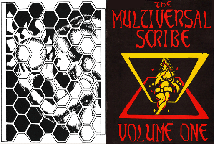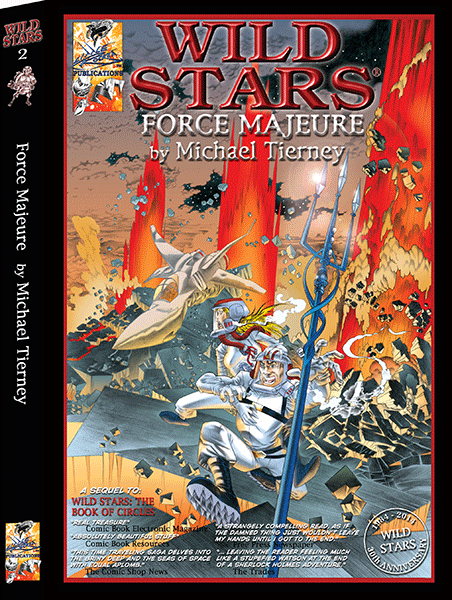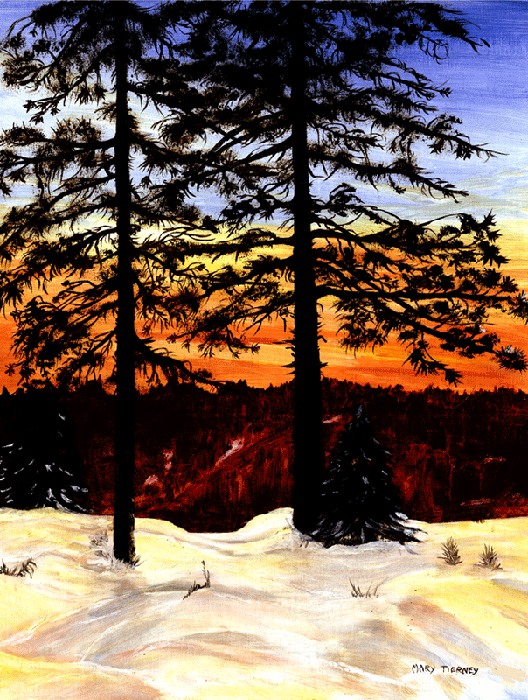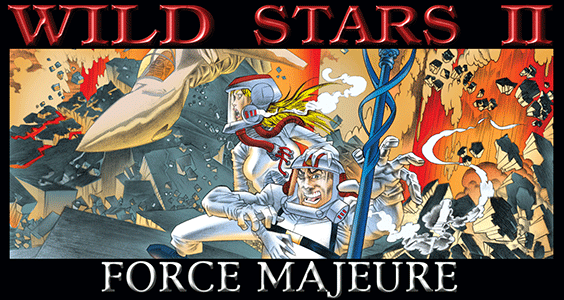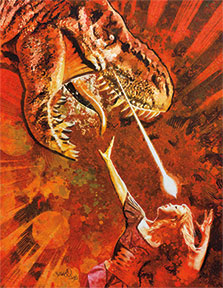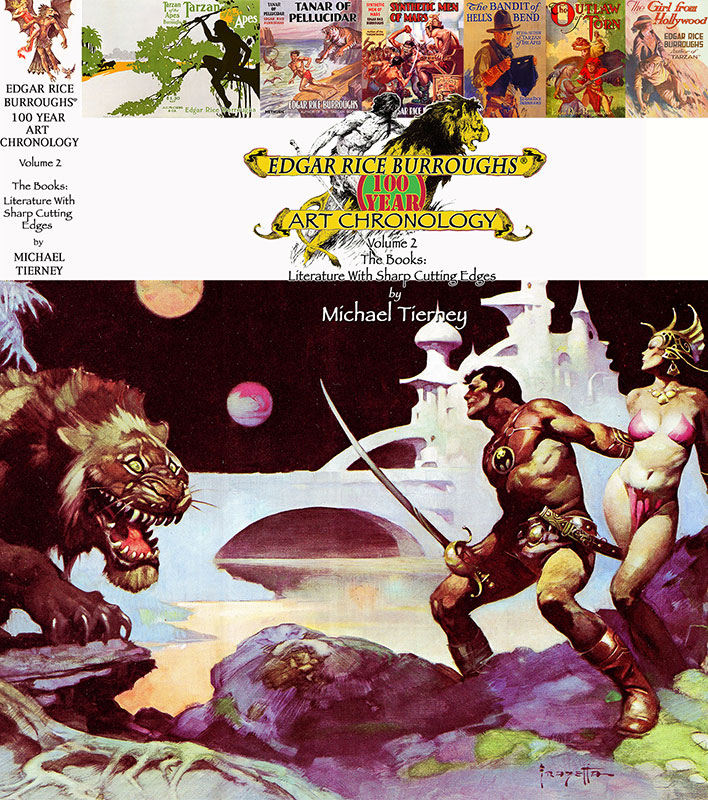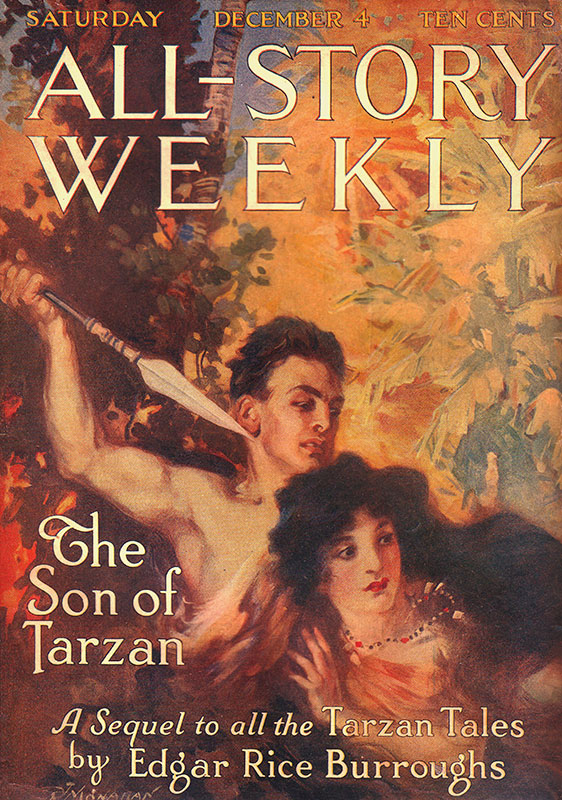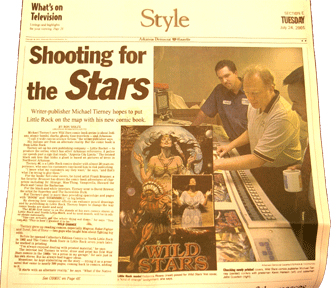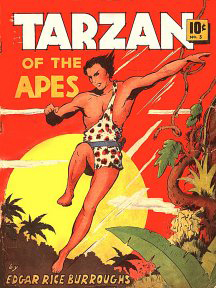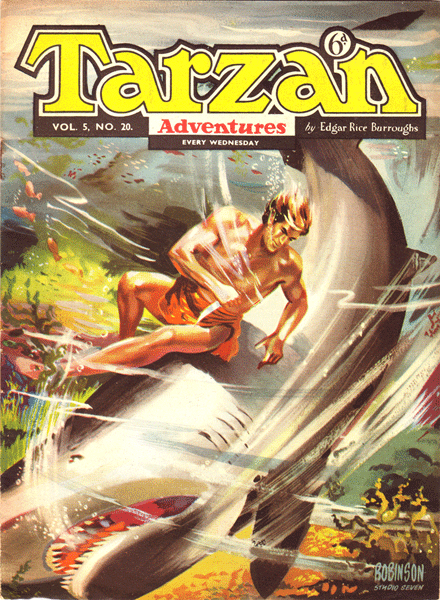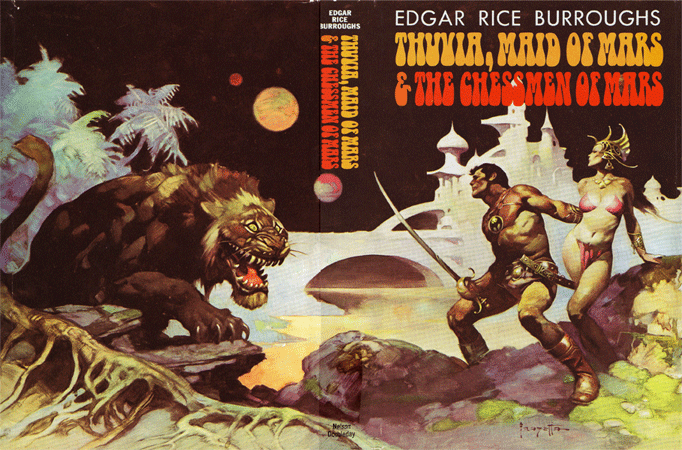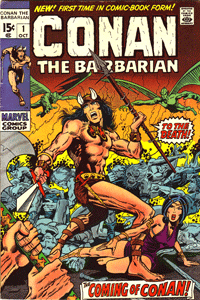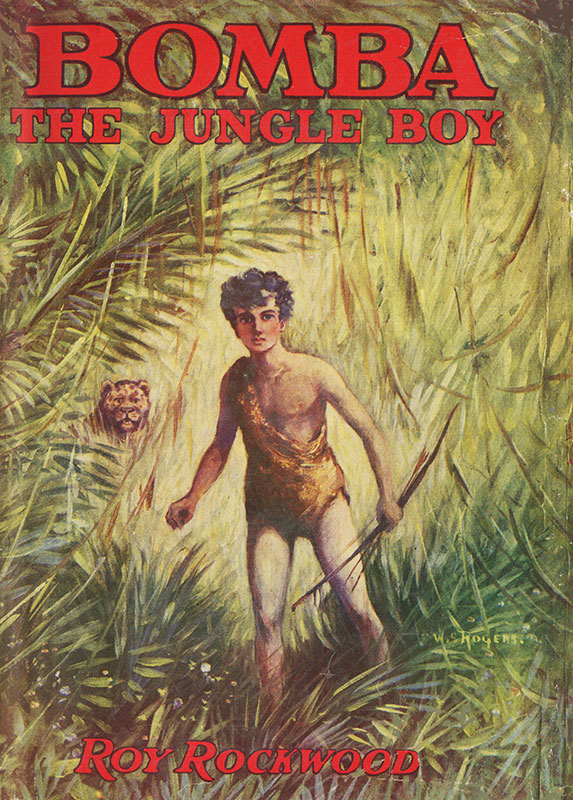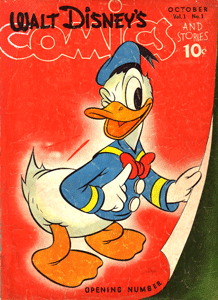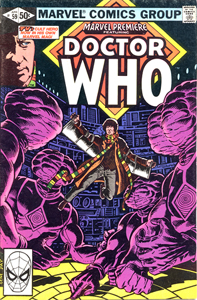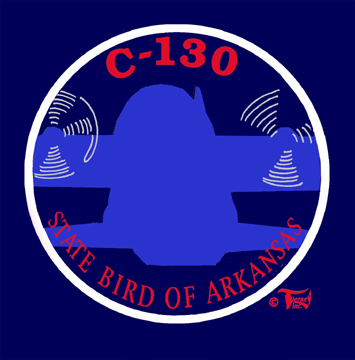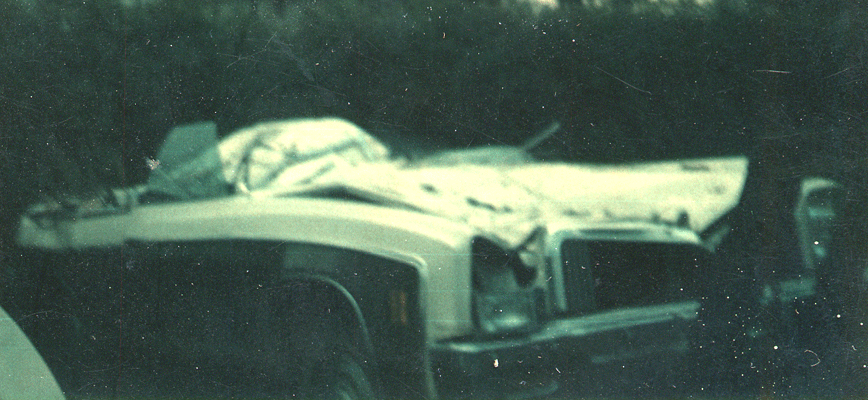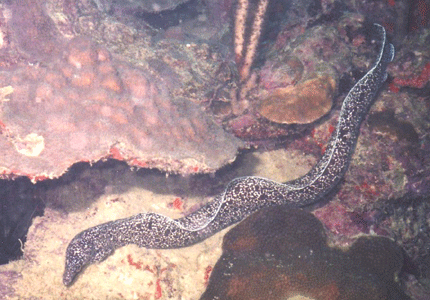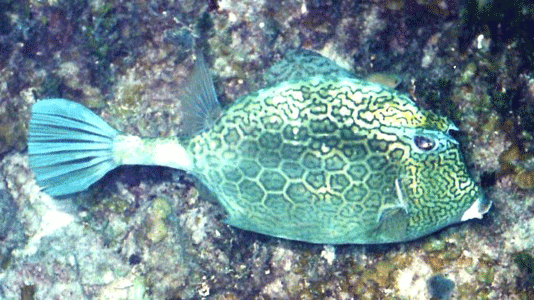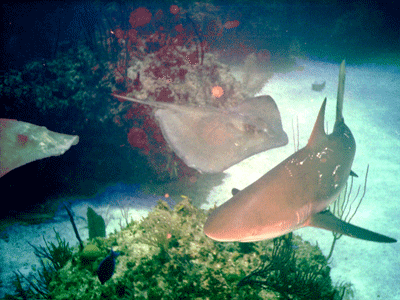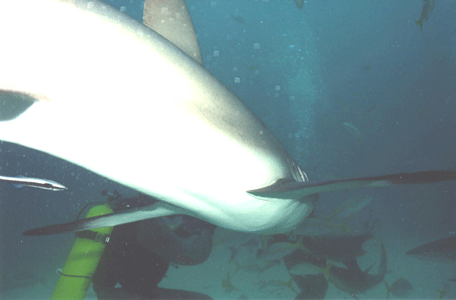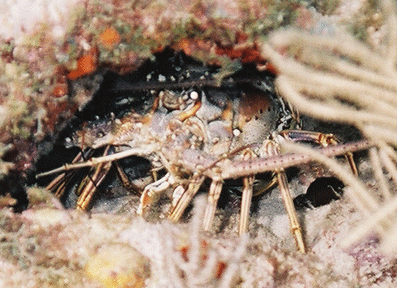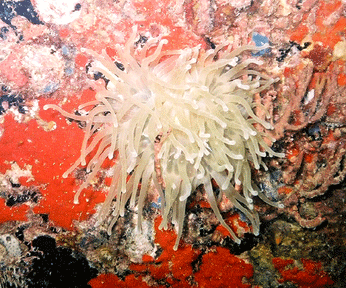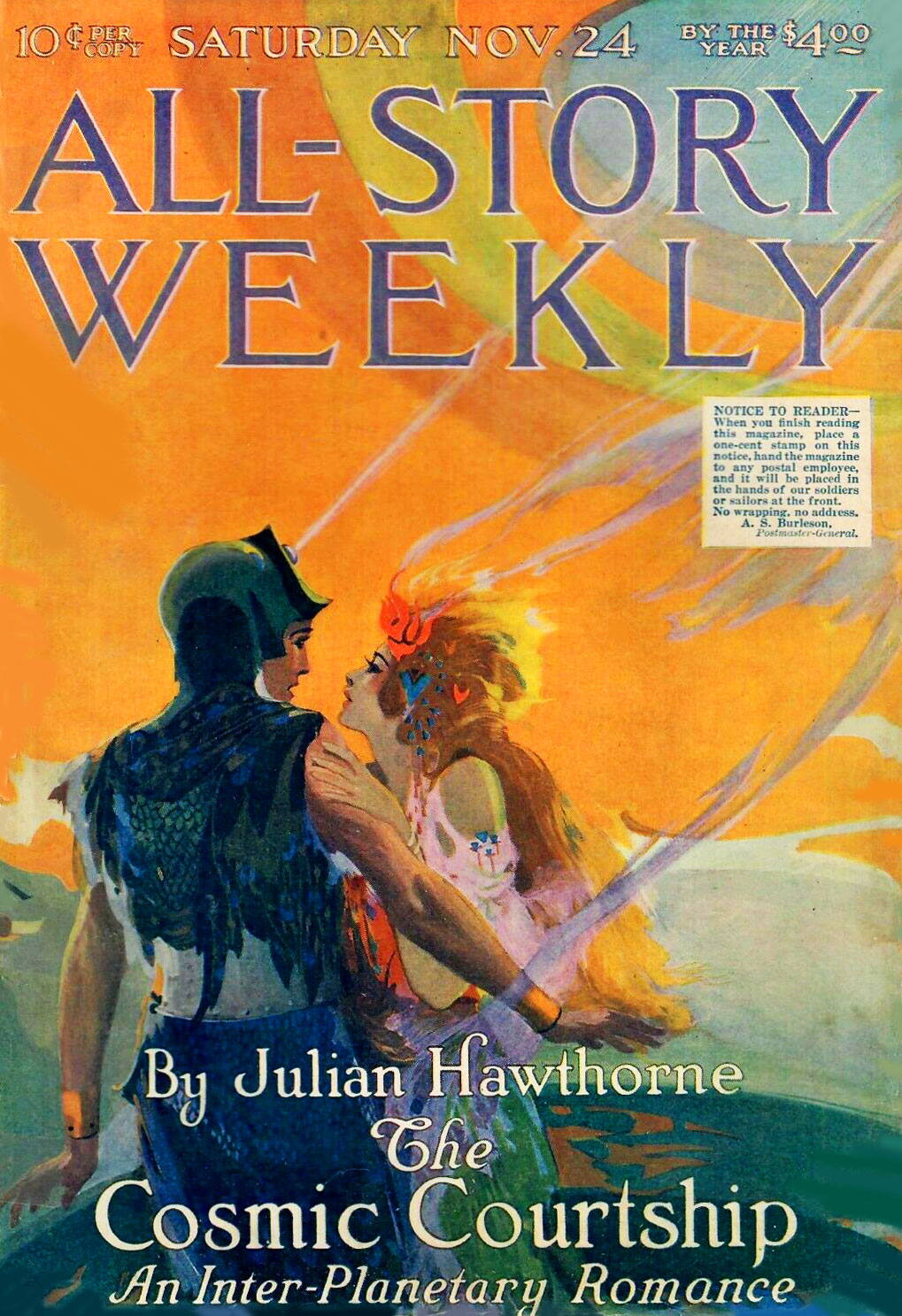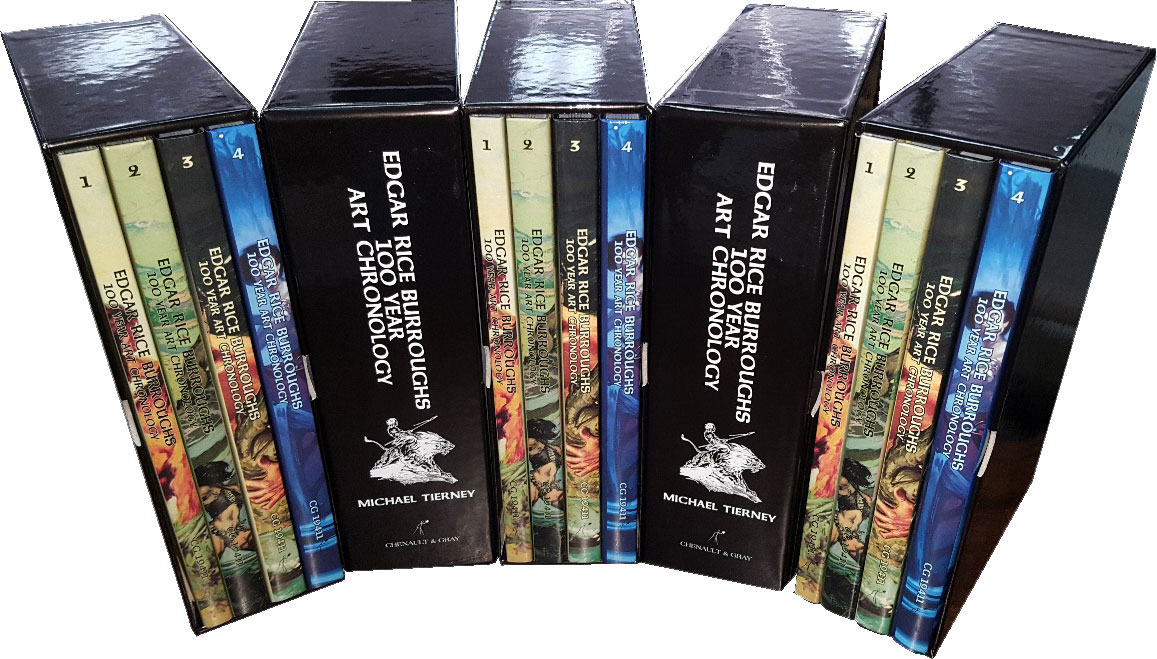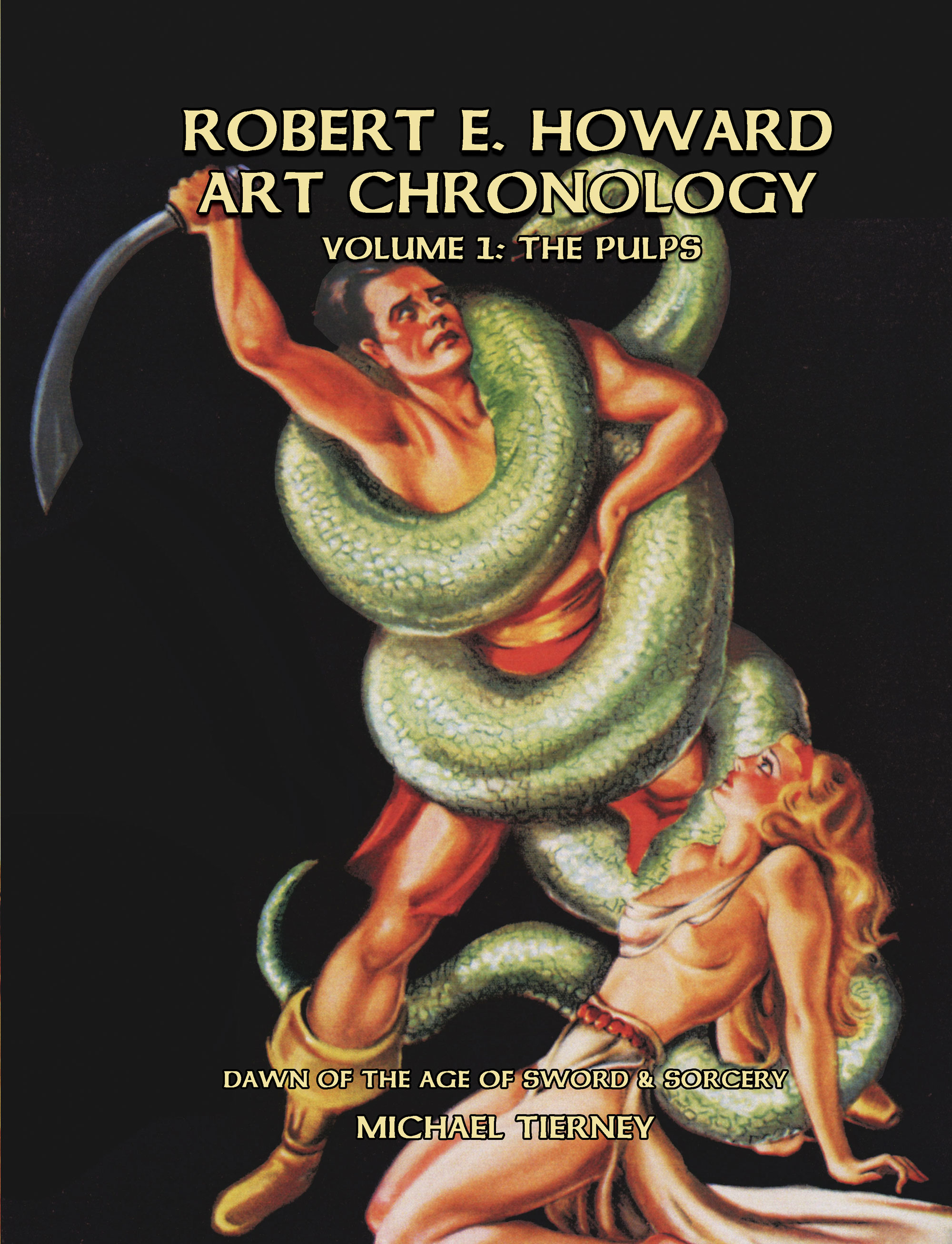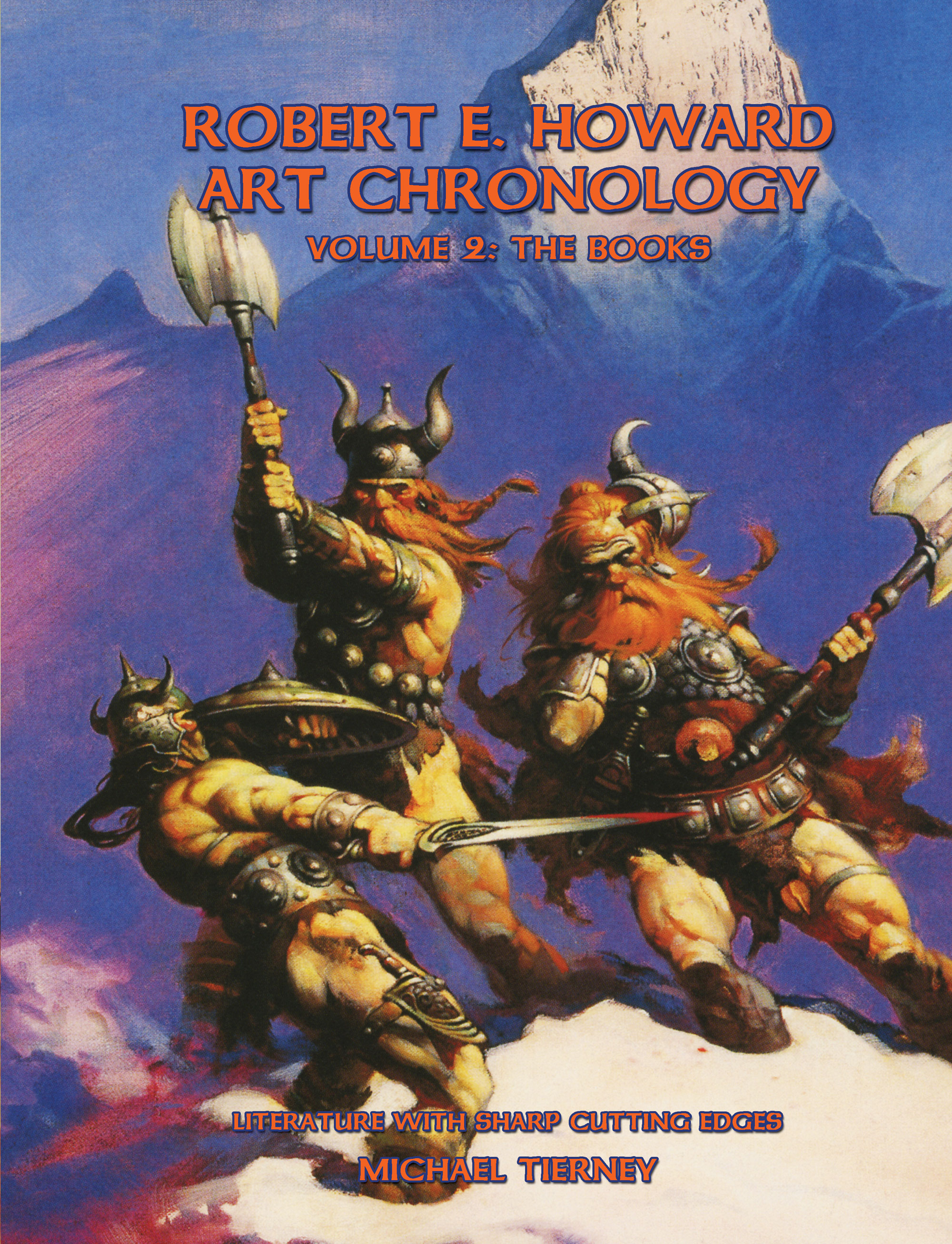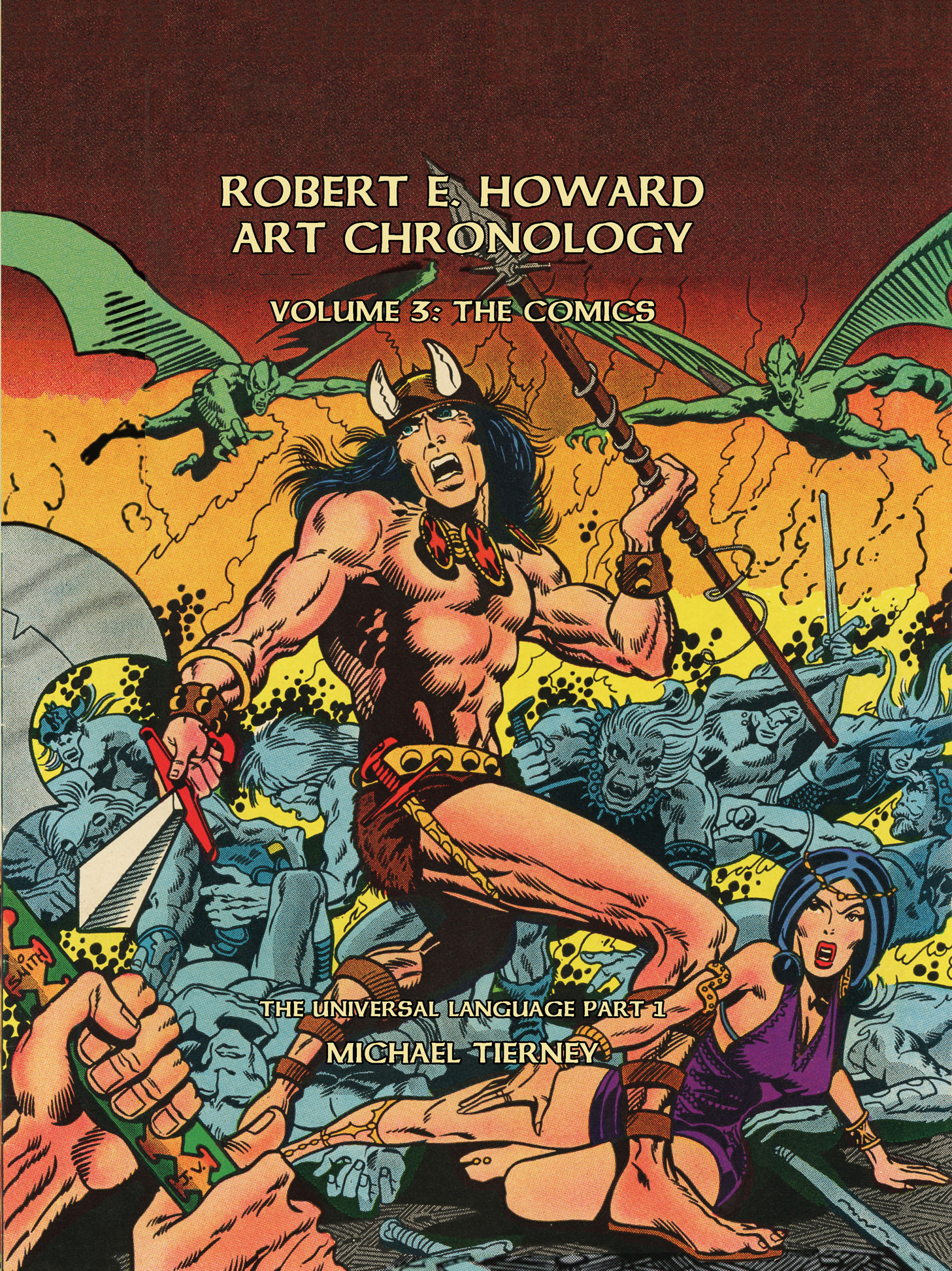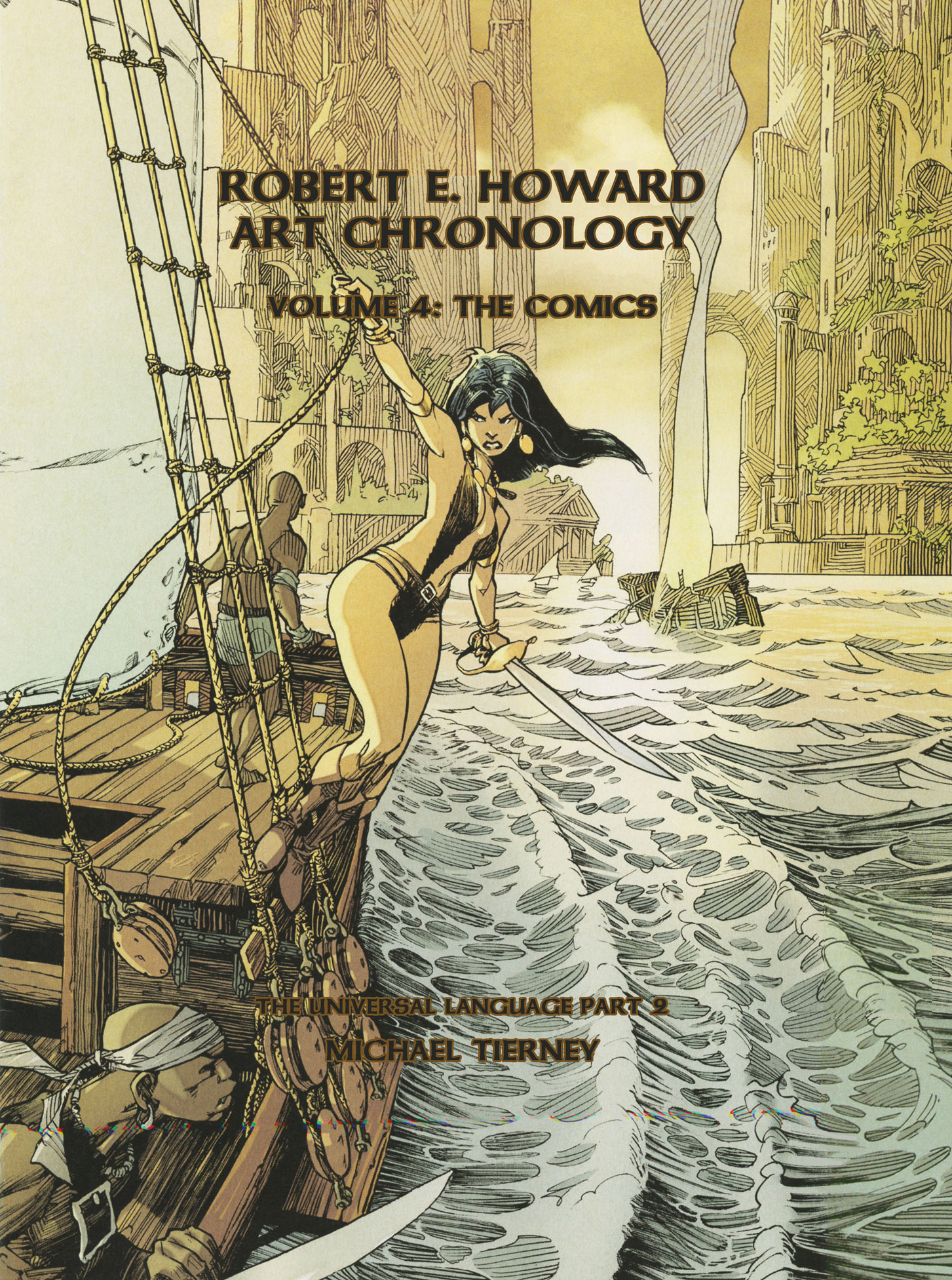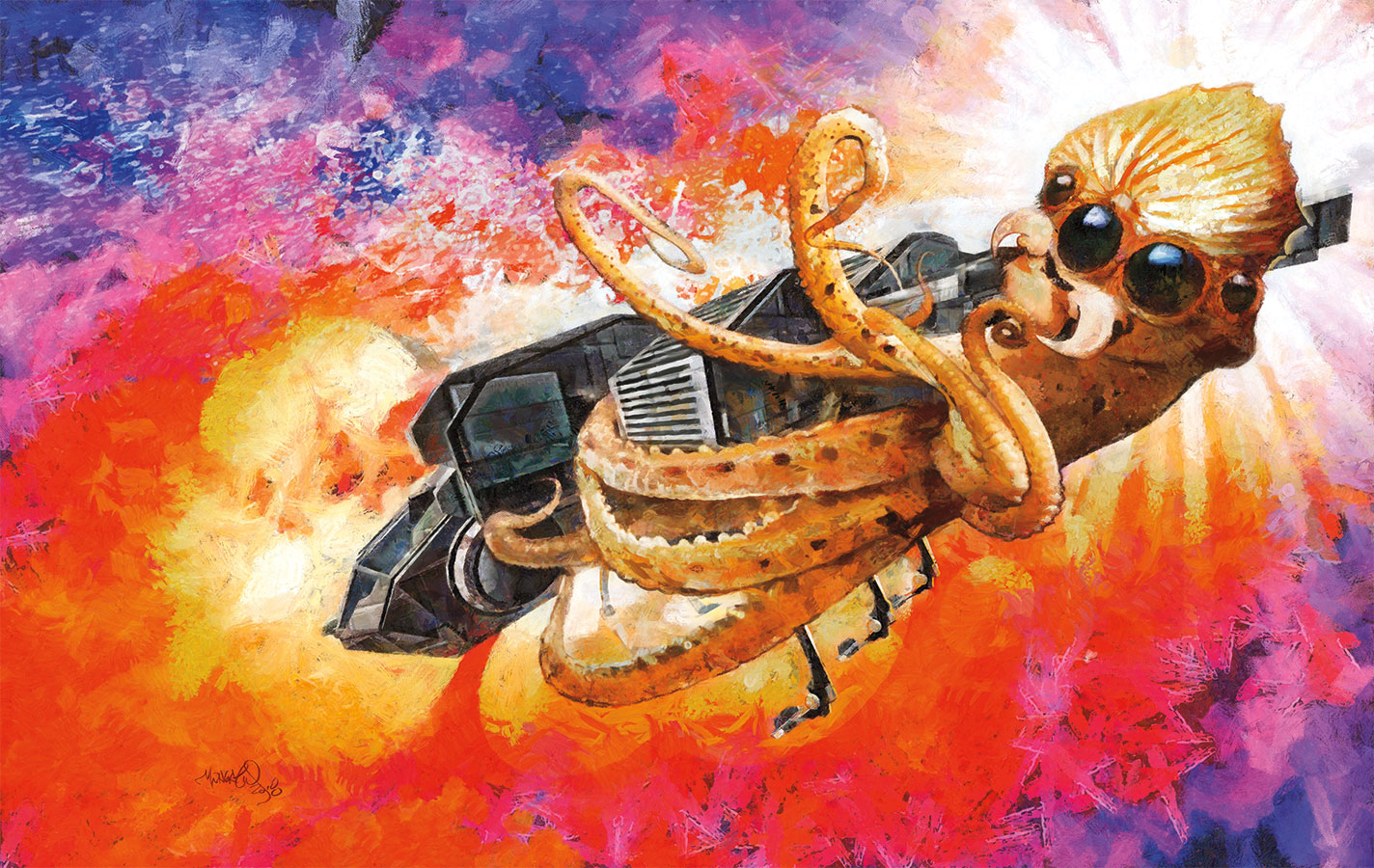
|
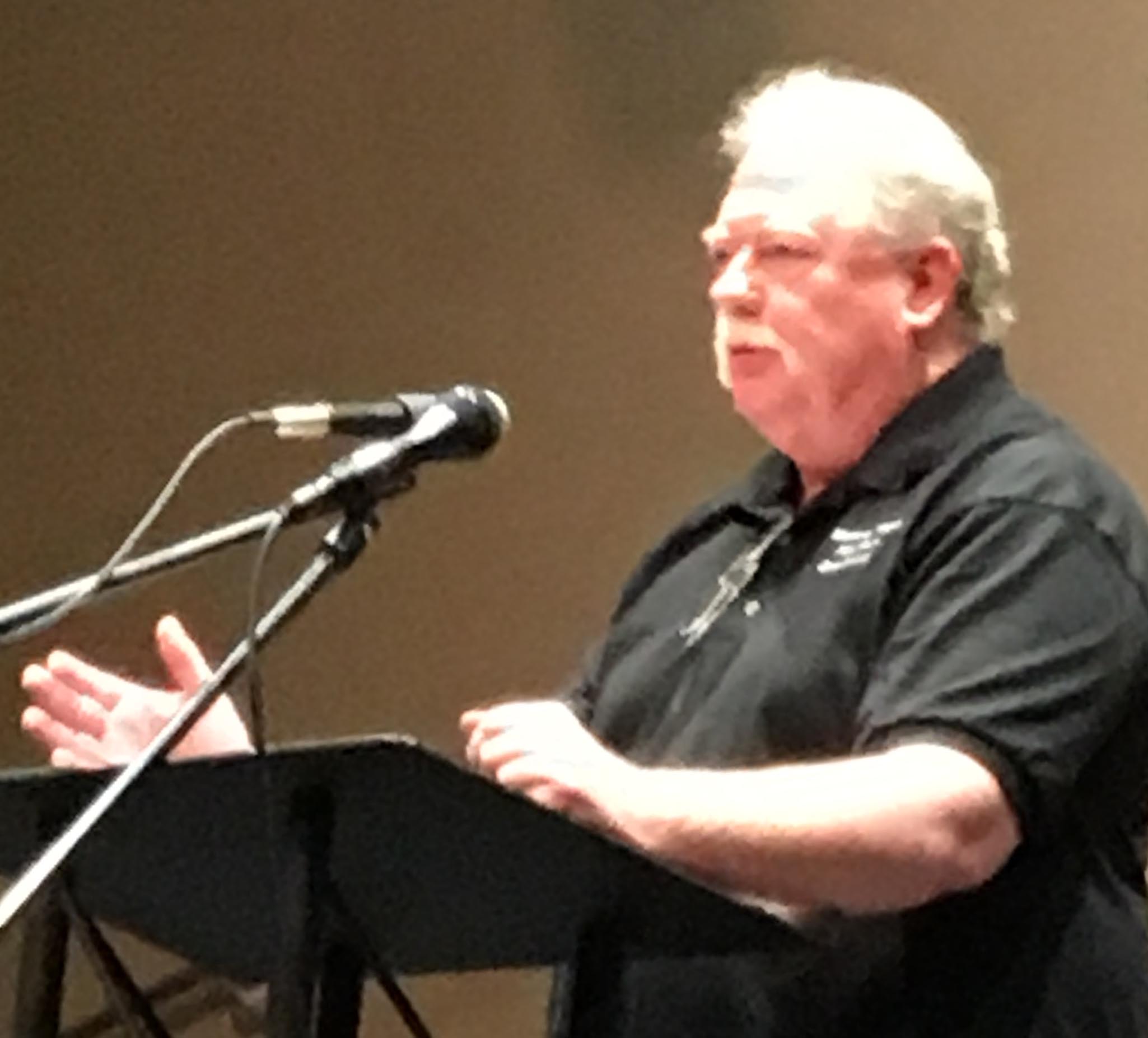
PULP COVERS
by Michael Tierney
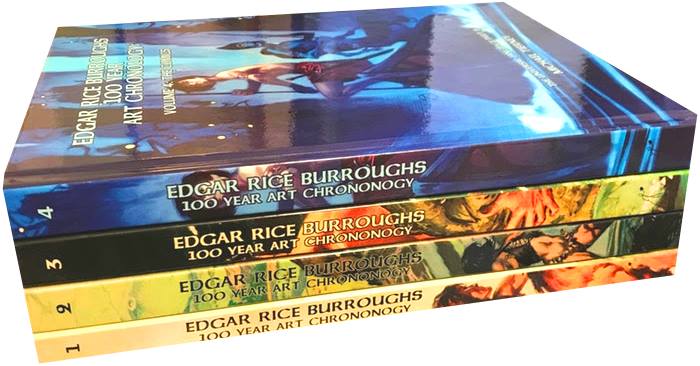 While I was creating the Edgar Rice Burroughs 100 Year Art Chronology, there were a lot of old pulps covers that I didn't use. These were covers that featured ERB's contemporaries and imitators. Some didn't make it into the Chronology because of redundancy, while others were outside the realm of public domain. Even more still are recent discoveries. They are a fun ride into the adventure literature of a century ago.
While I was creating the Edgar Rice Burroughs 100 Year Art Chronology, there were a lot of old pulps covers that I didn't use. These were covers that featured ERB's contemporaries and imitators. Some didn't make it into the Chronology because of redundancy, while others were outside the realm of public domain. Even more still are recent discoveries. They are a fun ride into the adventure literature of a century ago.
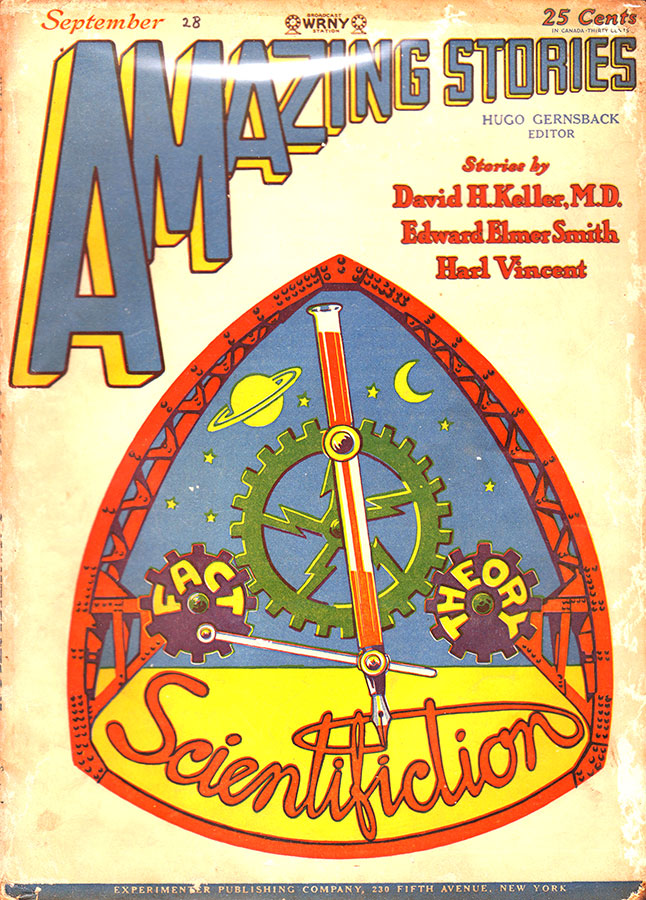 The second decade of the Twentieth Century was an evolutionary time in American literature, when the Munsey family of publications was under the direction of Editor Bob Davis, and with All-Story he explored every sort of fiction, including pioneering stories that he called Pseudo-Science. Amazing Stories would later redefine the genre as Scientifiction. Today we refer to fantastic fiction as science fiction.
The second decade of the Twentieth Century was an evolutionary time in American literature, when the Munsey family of publications was under the direction of Editor Bob Davis, and with All-Story he explored every sort of fiction, including pioneering stories that he called Pseudo-Science. Amazing Stories would later redefine the genre as Scientifiction. Today we refer to fantastic fiction as science fiction.
Some of the writers and their creations that Davis cultivated are still celebrated today, like Edgar Rice Burroughs and Tarzan of the Apes.
Showing the lost science fiction classic Cosmic Courtship (above) on this page led to a restoration project.
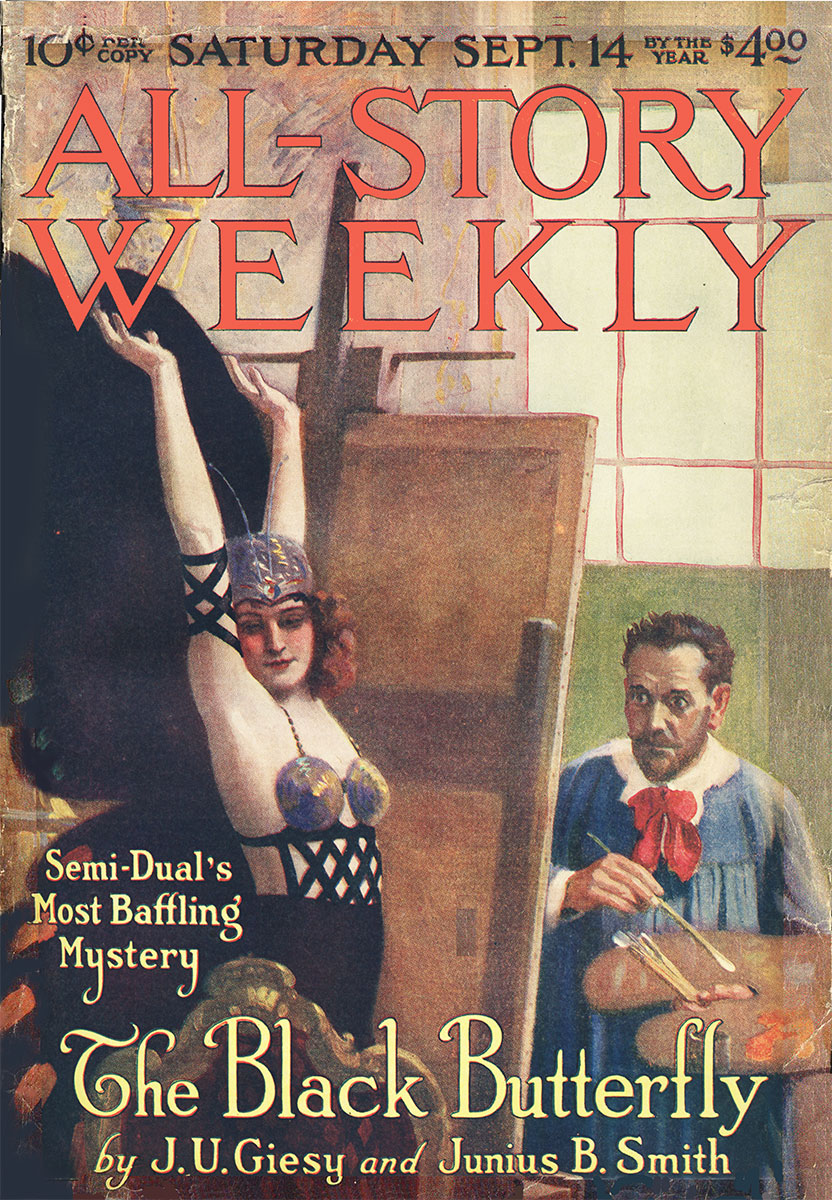
Others, like J. U. Geisy and Junius B. Smith's Semi-Dual, a detective who finds both mundane and mystical solutions to every mystery he faces, was more of a cross between Sherlock Holmes and DC Comics Hellblazer. Even more popular than Tarzan at the time, Semi-Dual had 30 books published in less than a score of years, but he is largely forgotten today. Quality copies of the issue featuring the Semi-Dual adventure of the Black Butterfly are rarely offered and always draw fierce competition.
Curse of Quetzal (below) is another fantastical collaboration of Giesy and Smith.
Looking through old pulps covers will reveal not only the fantasies of a generation long gone by, but also their reality of a world at war.
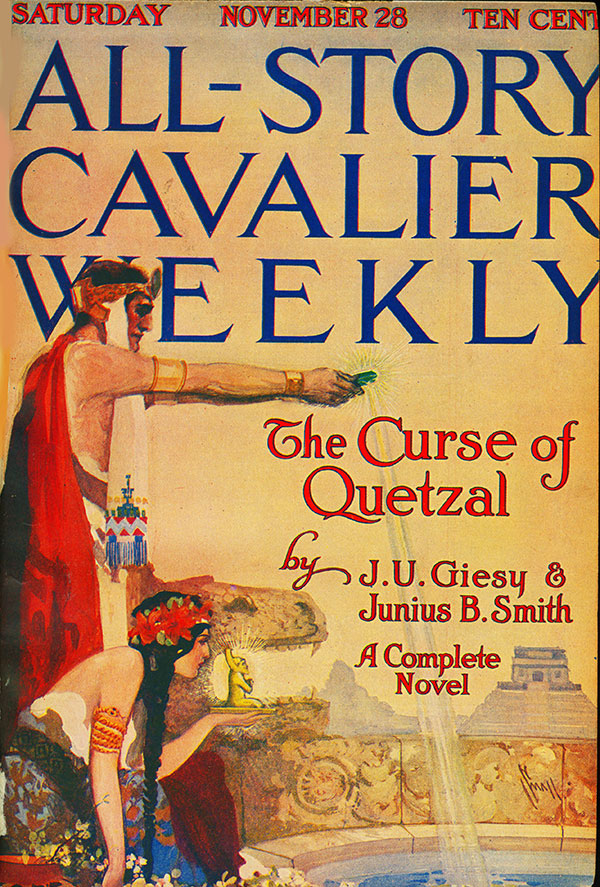
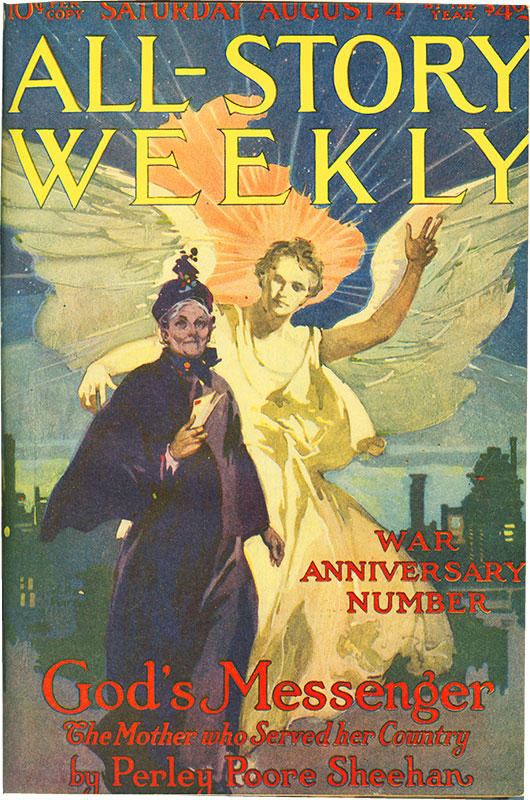
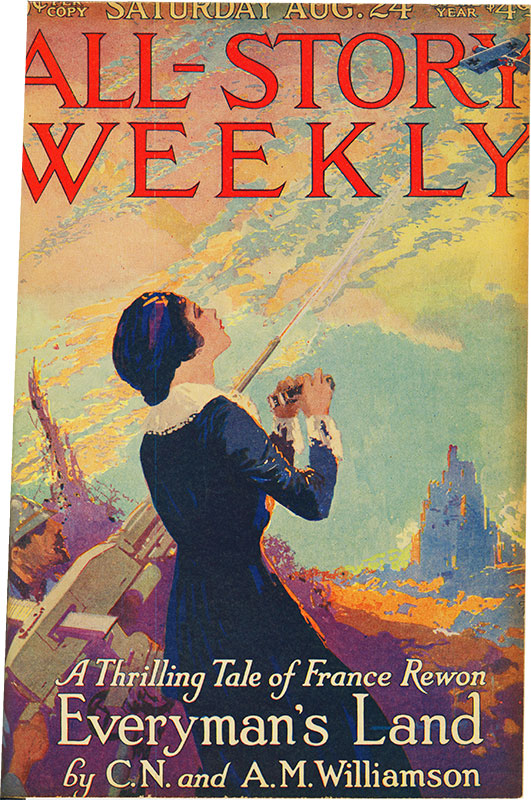
Geisy and Smith also did a John Carter of Mars swipe. Palos of the Dog Star Pack is a tale of astral transference from an earthbound body into that of another person on a far planet, orbiting beneath the star Palos. Since is was not a direct and complete transference of an individual, there was that difference, among others. Palos of the Dog Star Pack is the best known of all Geisy's many works and collaborations. The full five-part set of All-Storys containing this serialization are shown here.
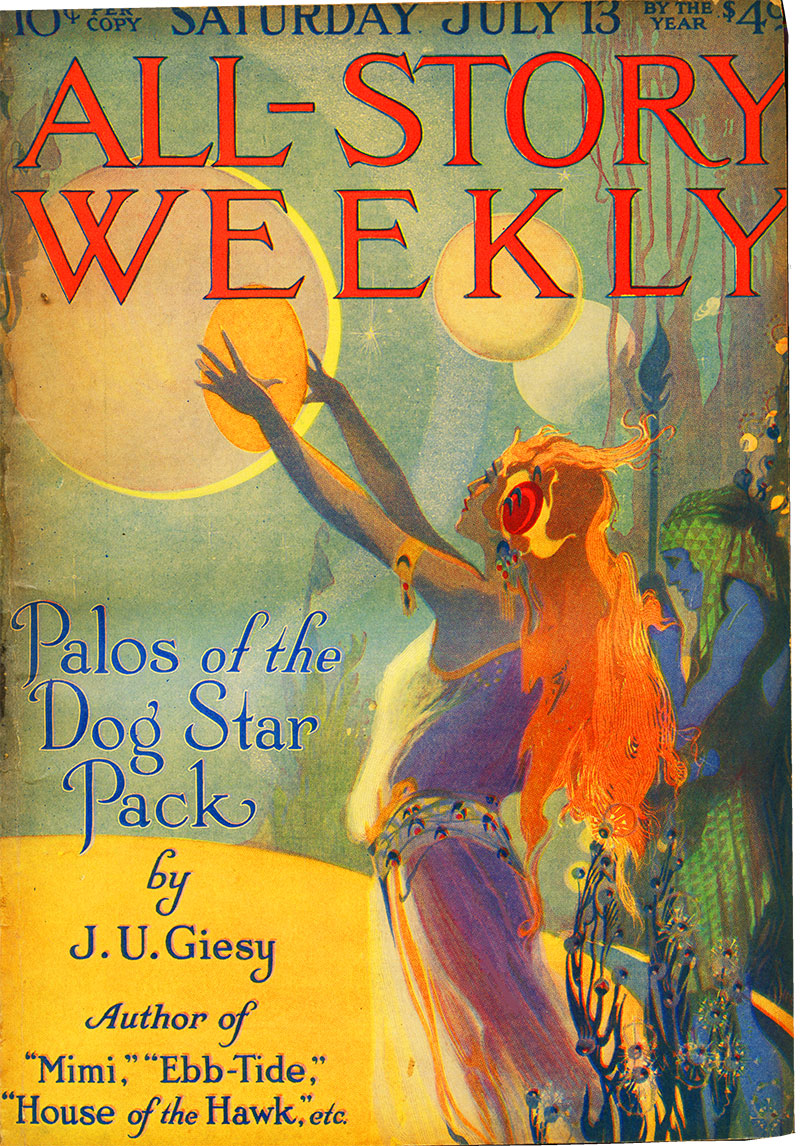
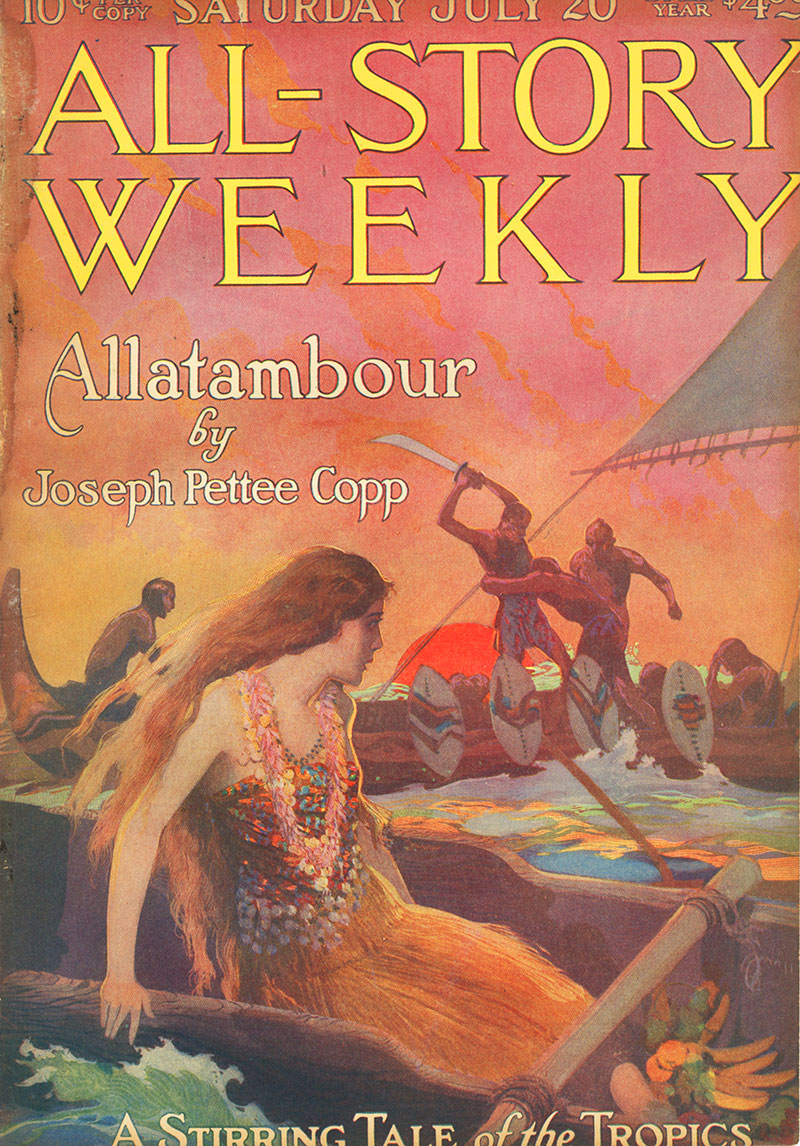
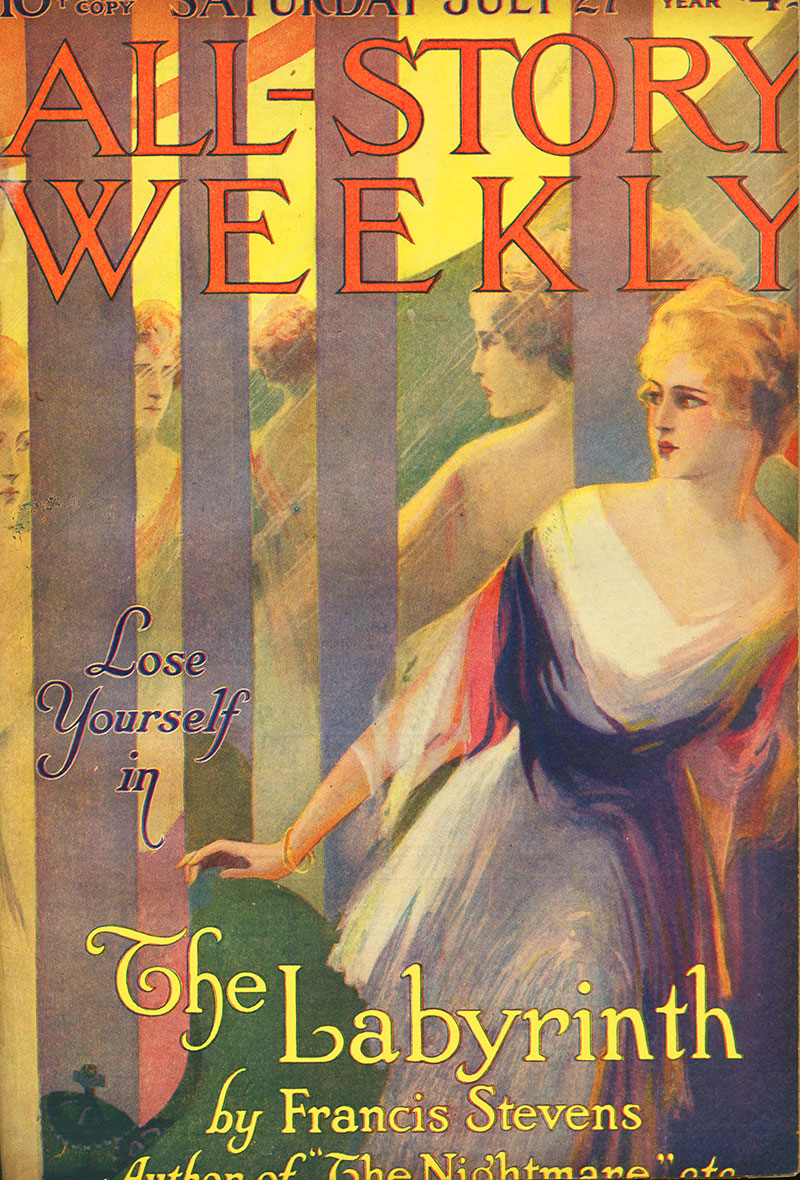
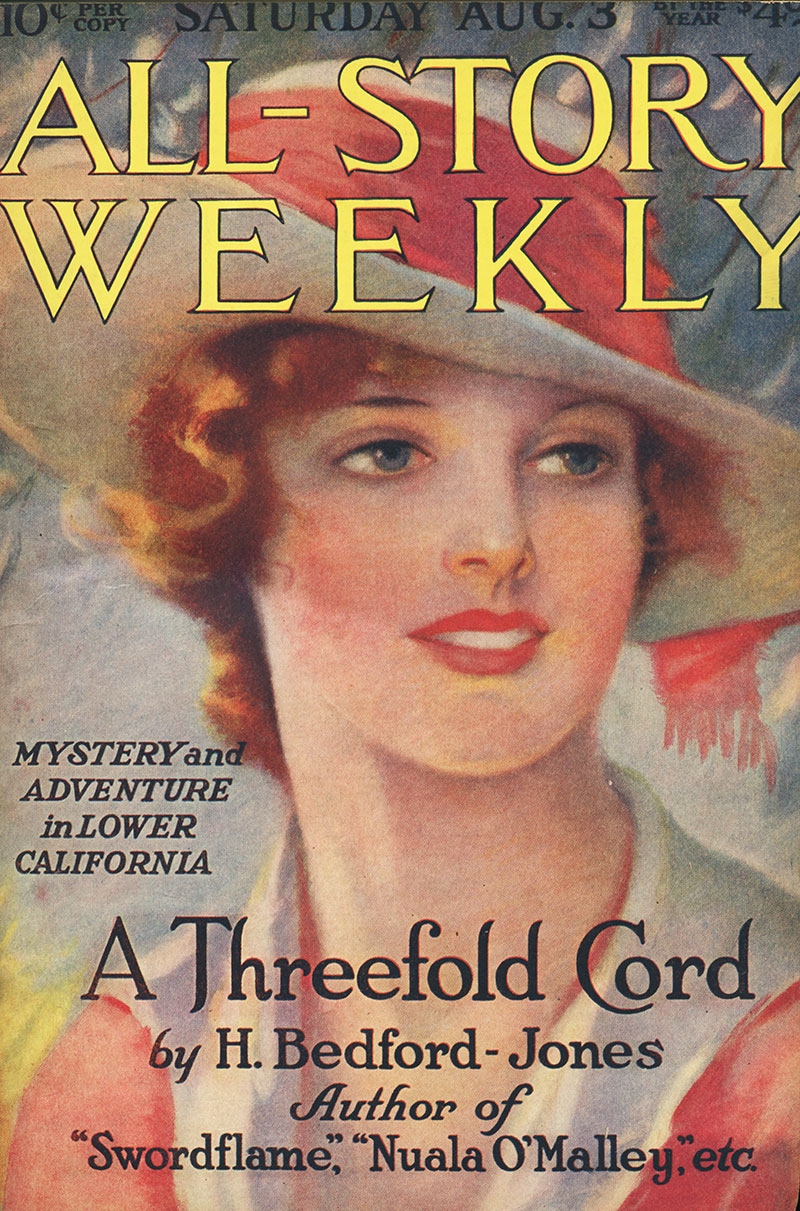
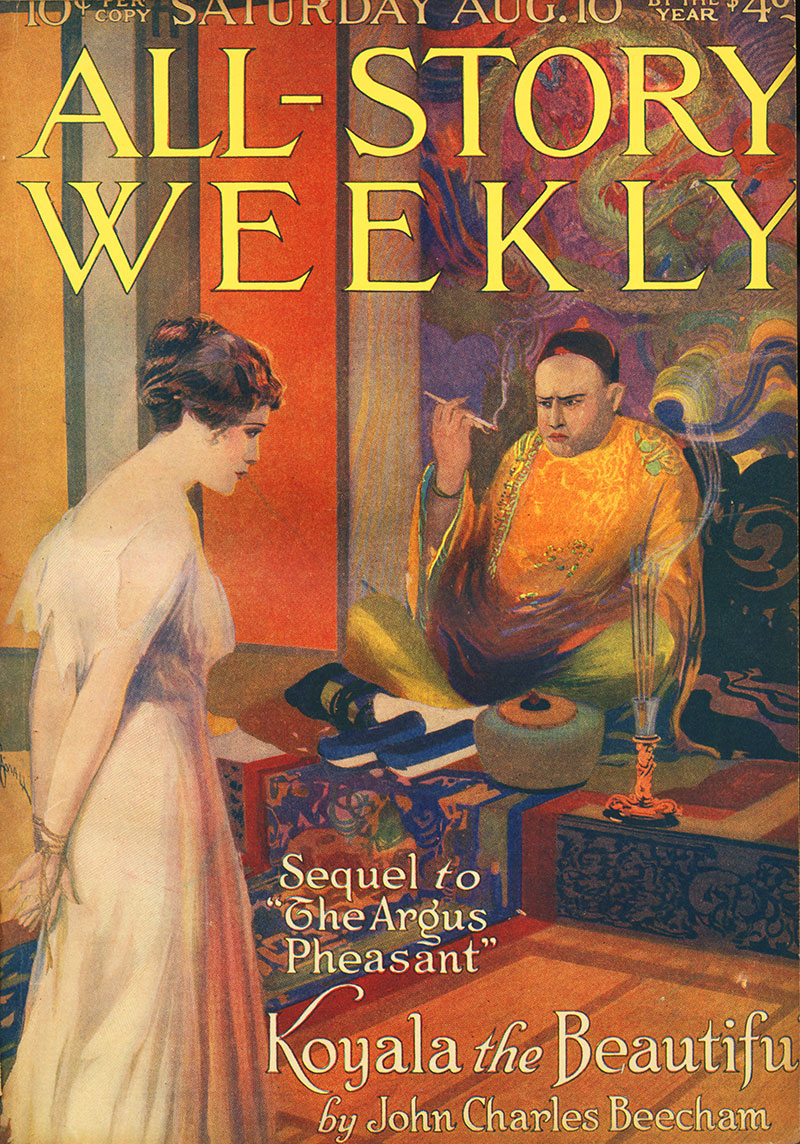
A Man Named Jones is by Charles Stilson, whose Polaris of the Snows--a Tarzan imitator that was fatally flawed because it placed polar bears in the Antarctic--is his better remembered work. But, A Man Named Jones was Stilson's signature work, and I've never seen another copy of this issue offered for sale, except as a facsimile reprint. The only way I found my copy was within a bound collection of All-Story issues.
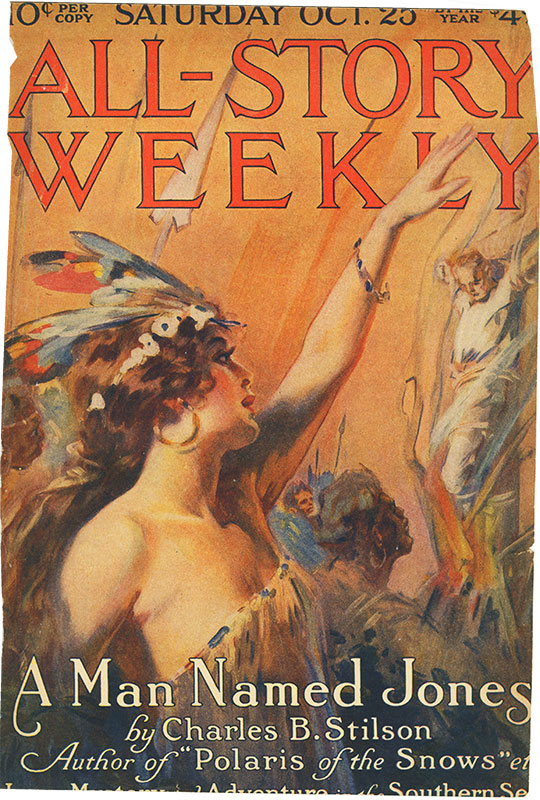
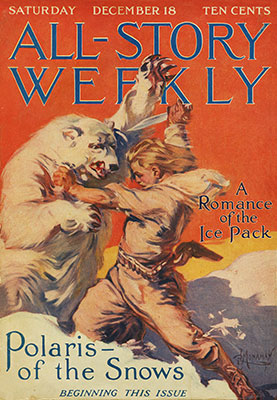
Fang Tung Magician was written by the incredibly prolific H. Bedford-Jones, whose historical adventures were featured in more issues than any other All-Story author.
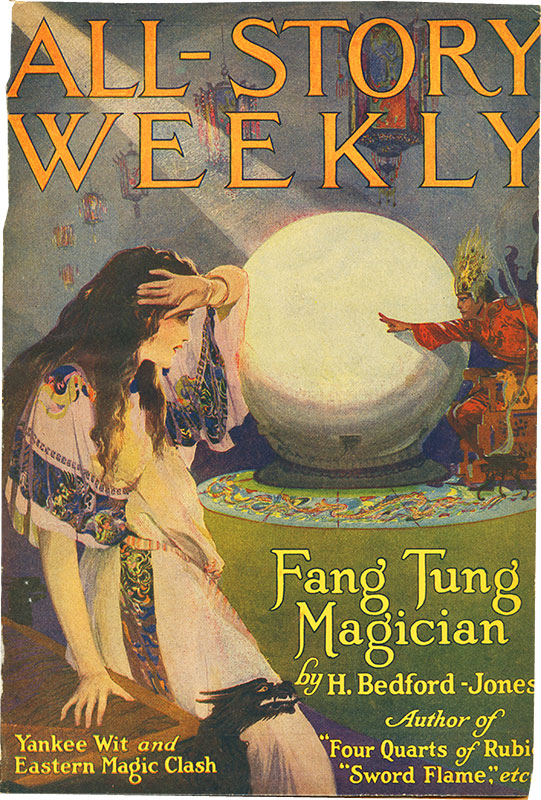
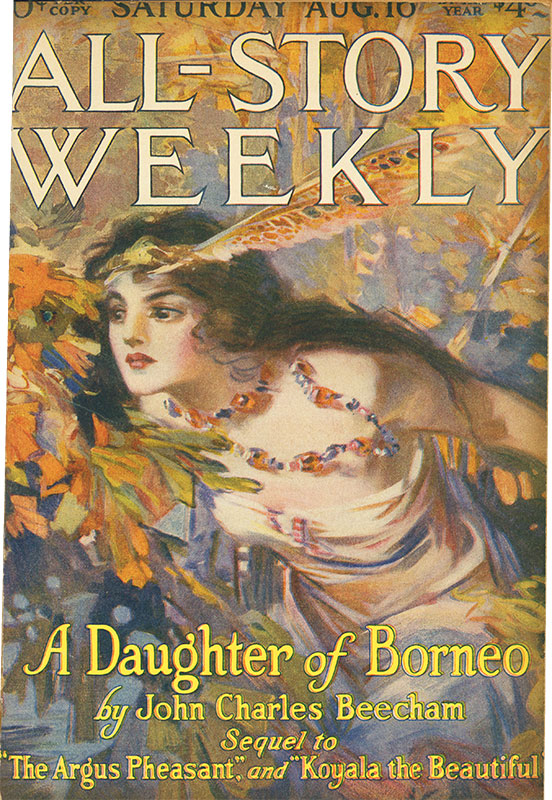
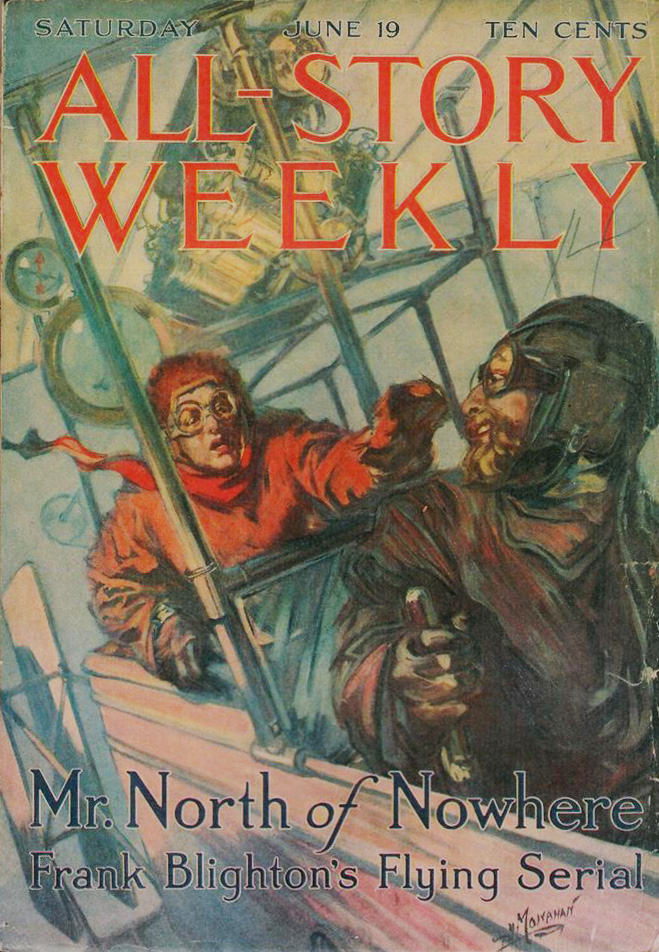
A Daughter of Borneo is another exotic locale adventure, like A Man Named Jones. What's notable about the covers for both is artist P. J. Monahan, who at the time was the main cover illustrator for Edgar Rice Burroughs's many different genres of tales. Monahan illustrated everything from the fantastic to the mundane, and did it all well, as his cover for Mr. North of Nowhere shows.
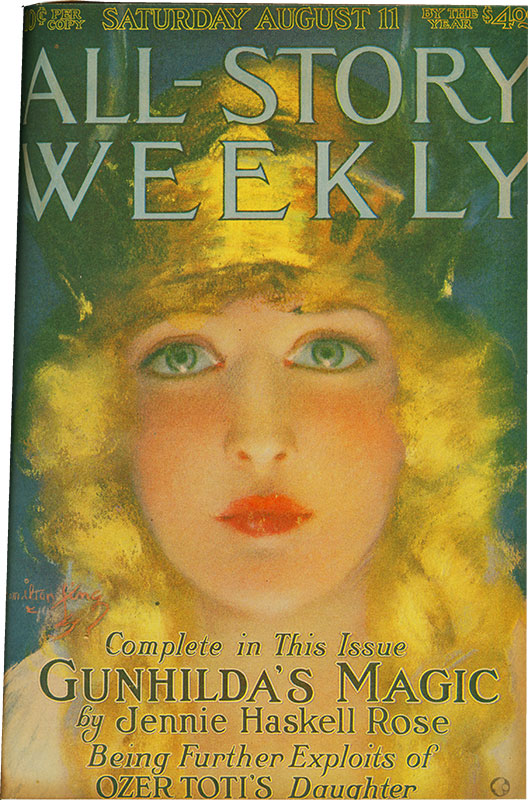
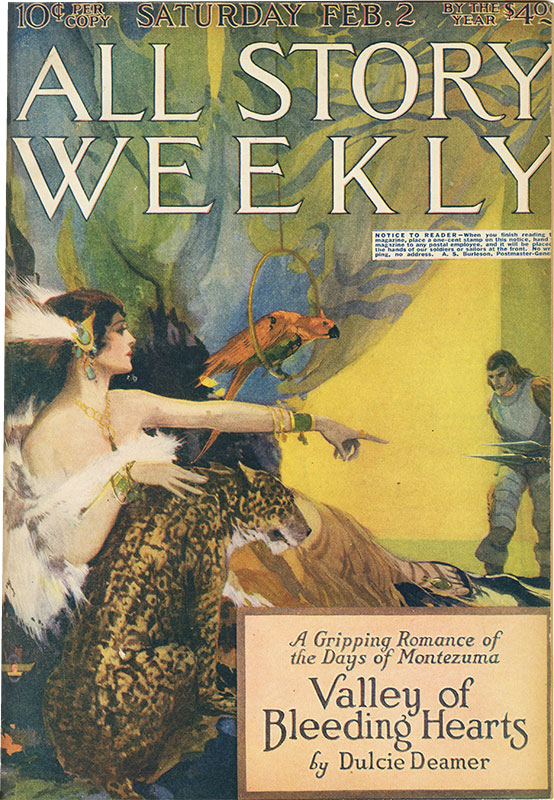
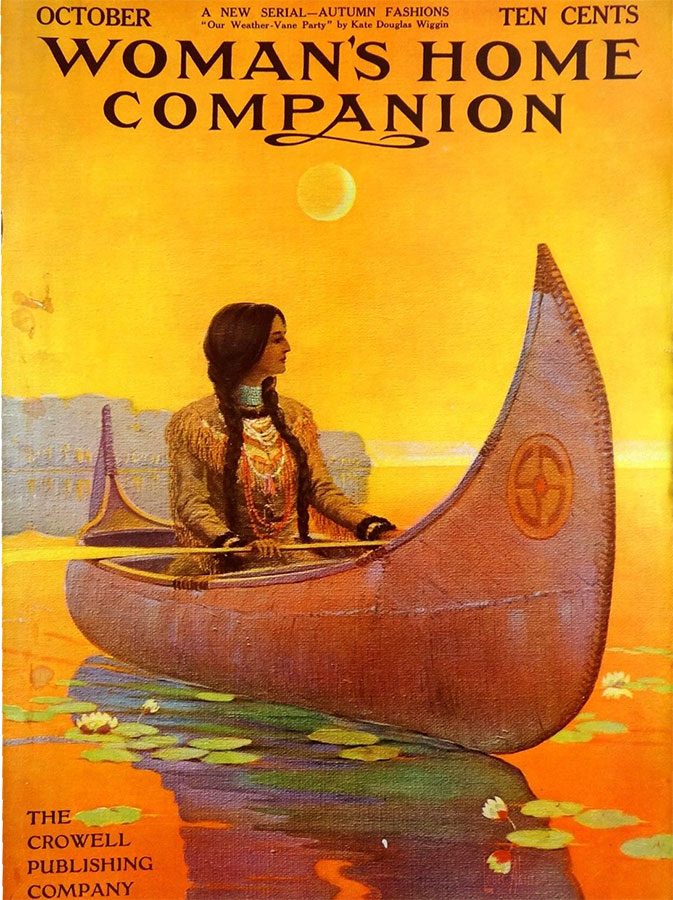
Gunhilda's Magic is simply another picture of a pretty girl, with glamor girl covers being a very common theme on the covers of other pulps from this time. What makes this one unique is the added fantasy element. This was what separated All-Story from its competitors, who also often featured exceptional cover art, in an age when print runs ran in the millions.
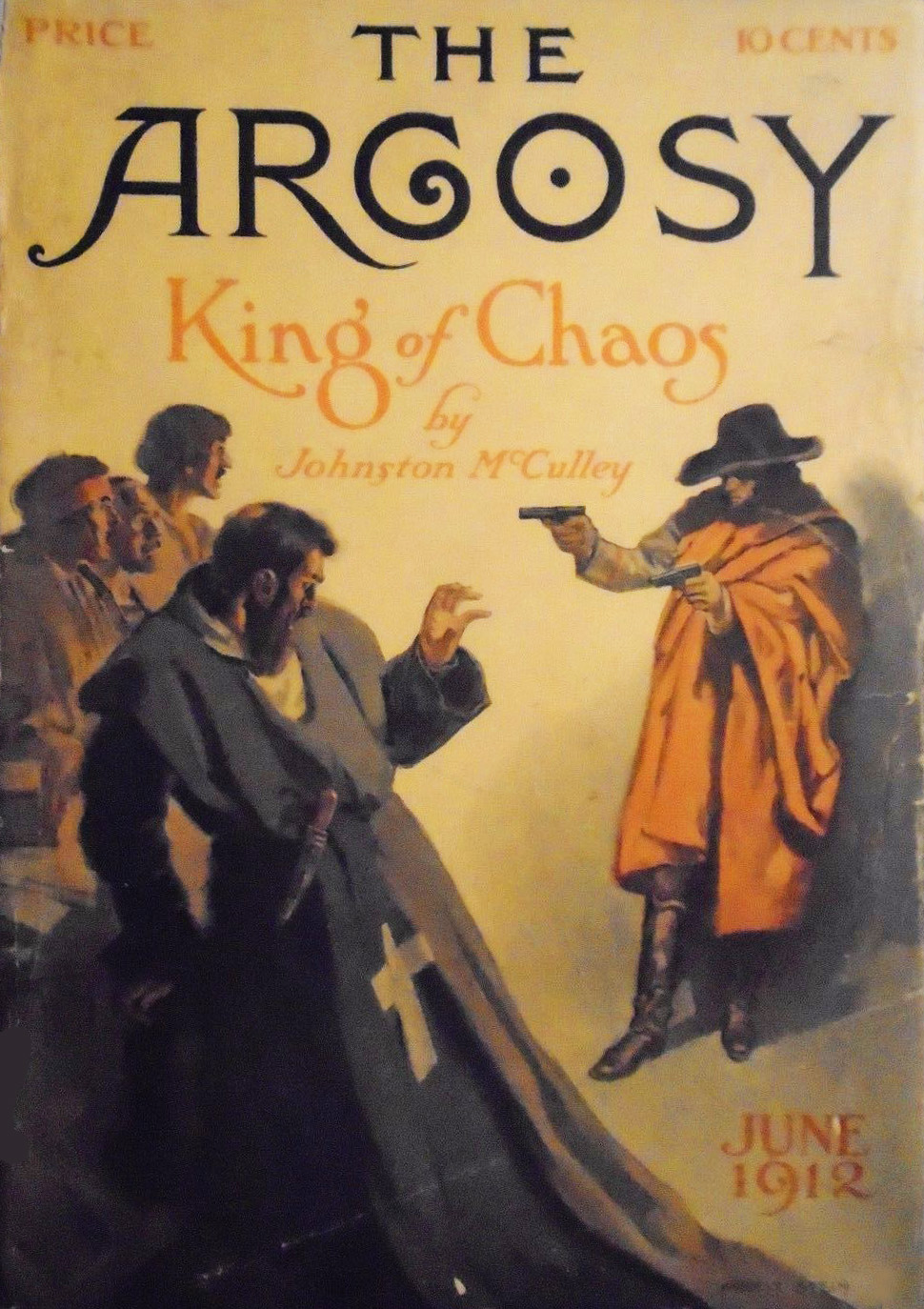
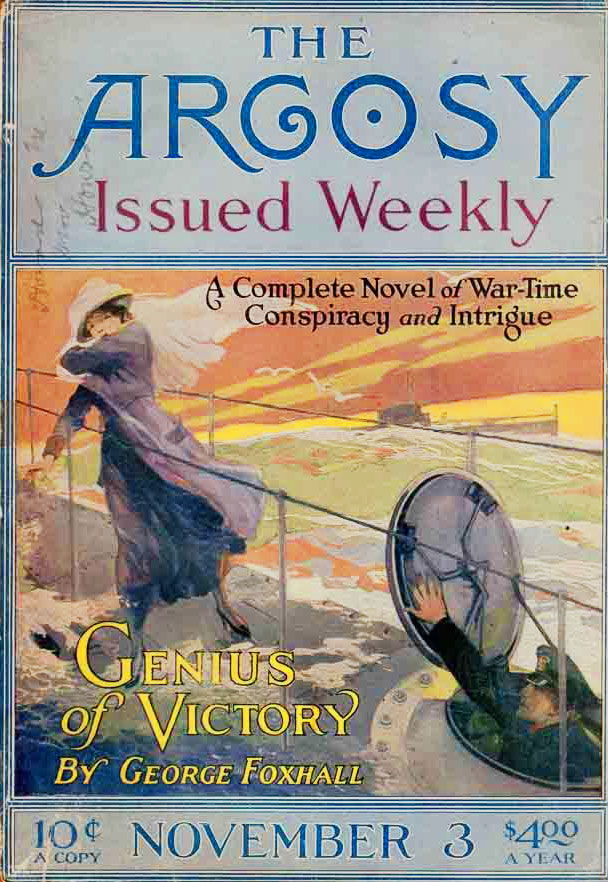
All-Story would eventury be incorporated into Munsey's flagship title, Argosy Magazine, and their run of fantastic covers and literature would continue throughout a series of title changes--first to Argosy All-Story Weekly, then Argosy Weekly, and finally back to the original title of Argosy..
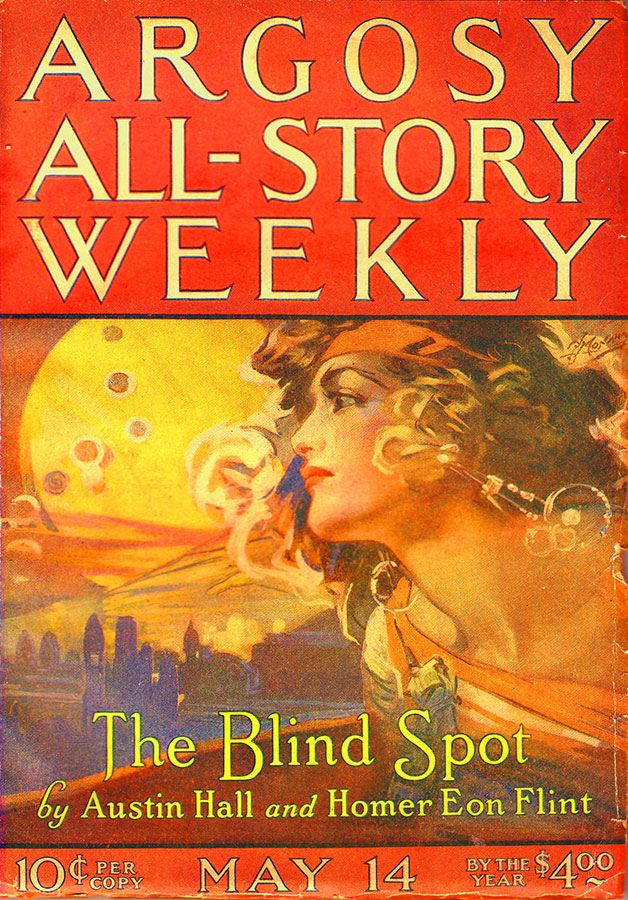
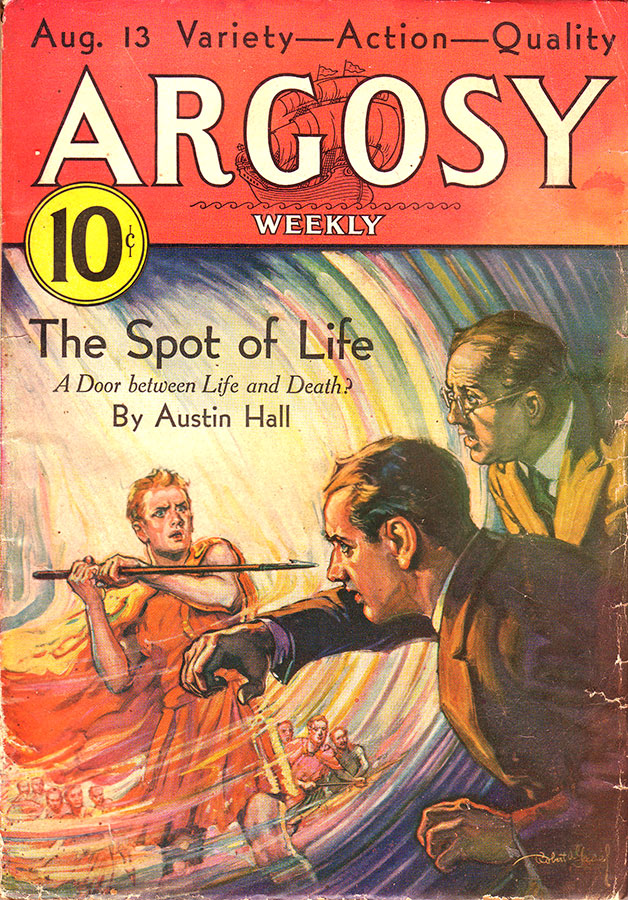
While I did show P. J. Monahan's cover for the first alternate reality story, The Blind Spot, in the ERB Art Chronology, because it was not yet in public domain, I couldn't show the sequel story of The Spot of Life. The tragic story of why the sequel was written by Austin Hall without the help of Homer Eon Flint is told in the Chronology.
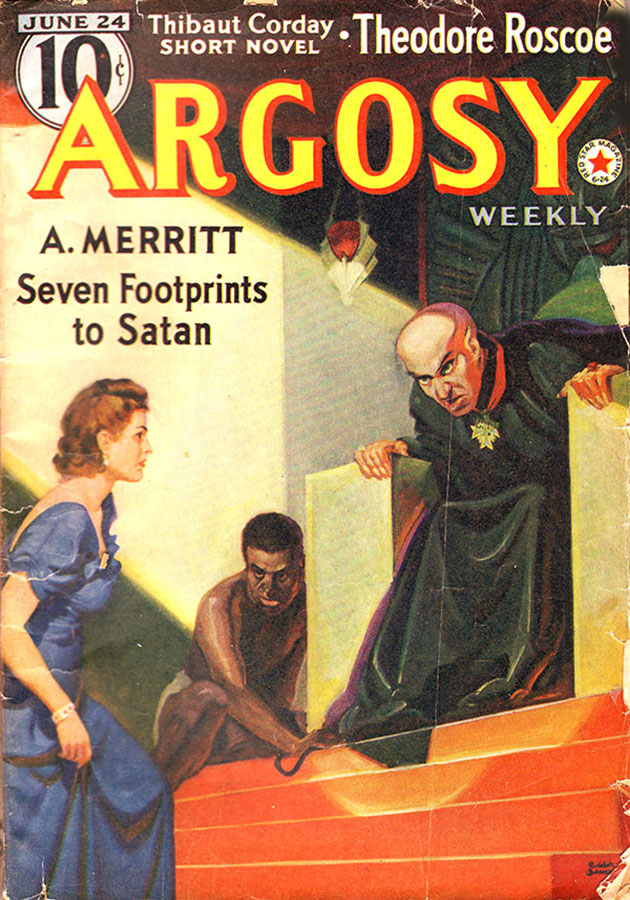
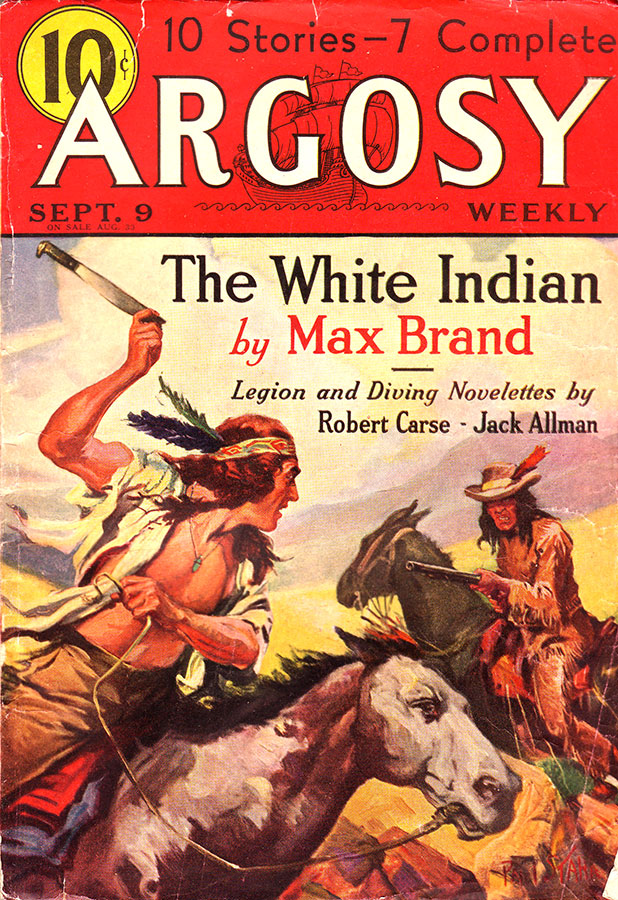
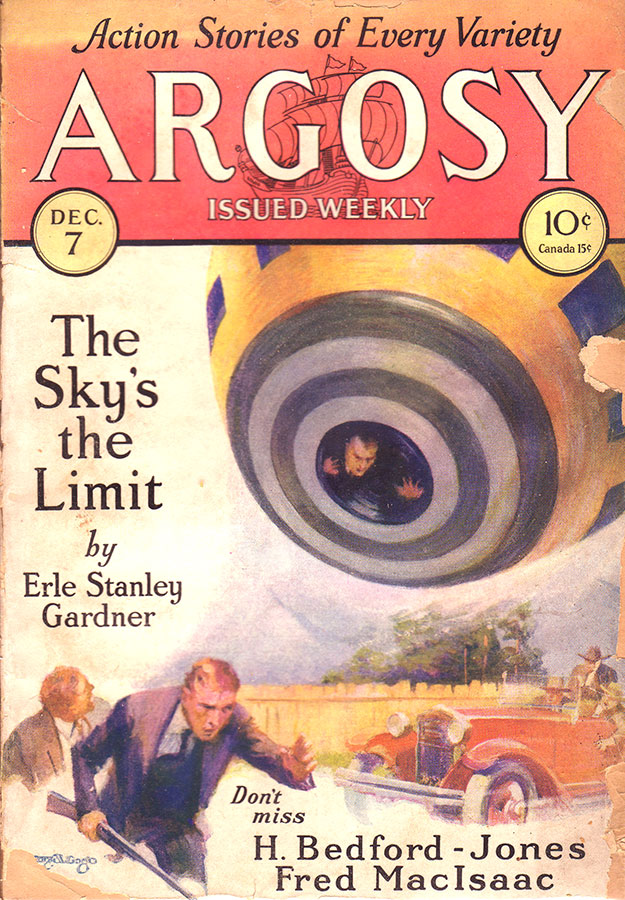
Argosy featured a stable of top notch writers. A. Merrit's Seven Footprints to Satan shows the heroine walking those footsteps. And while even writers like Max Brand were known to do adventure stories beyond westerns, not many realize that Perry Mason creator Erle Stanley Gardner took a crack at science fiction.
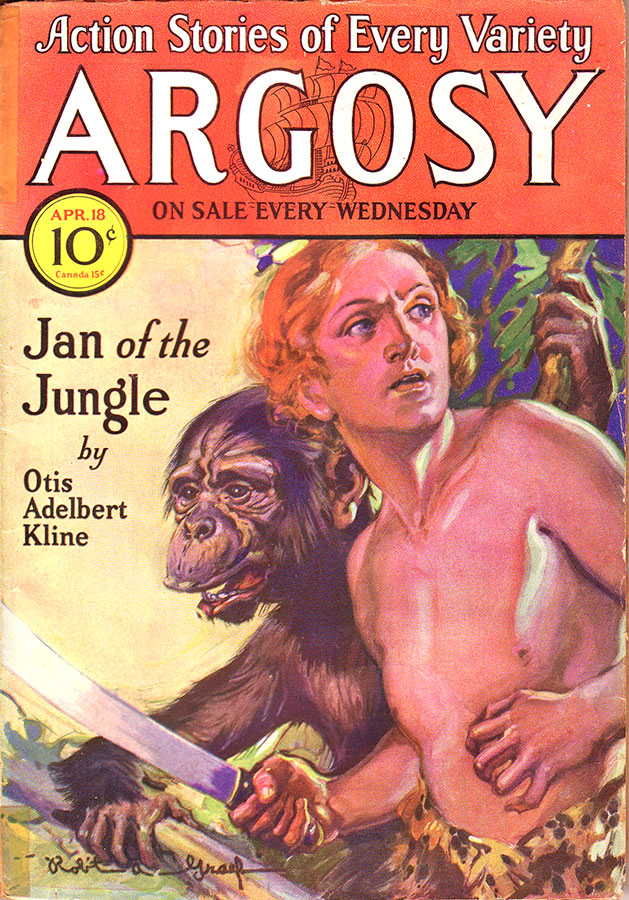
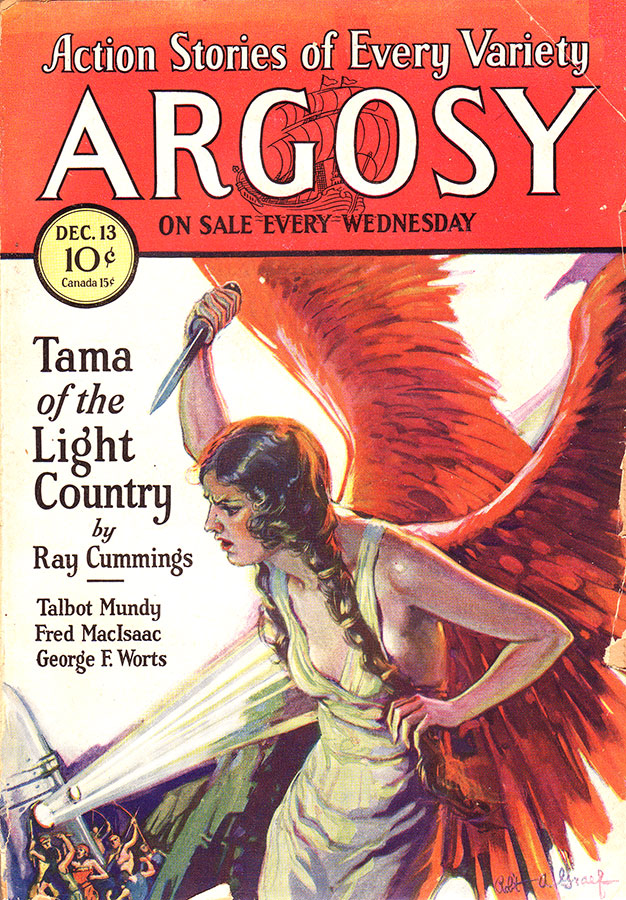
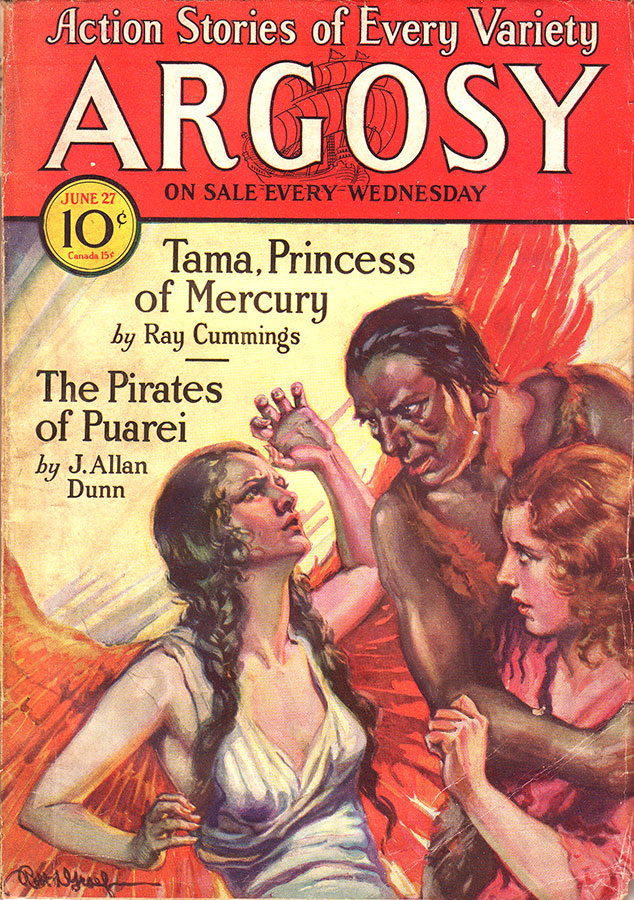
Ray Cummings was another ERB imitator who, dispite being very prolific, didn't do direct swipes like Otis Adelbert Kline did with Jan of the Jungle.
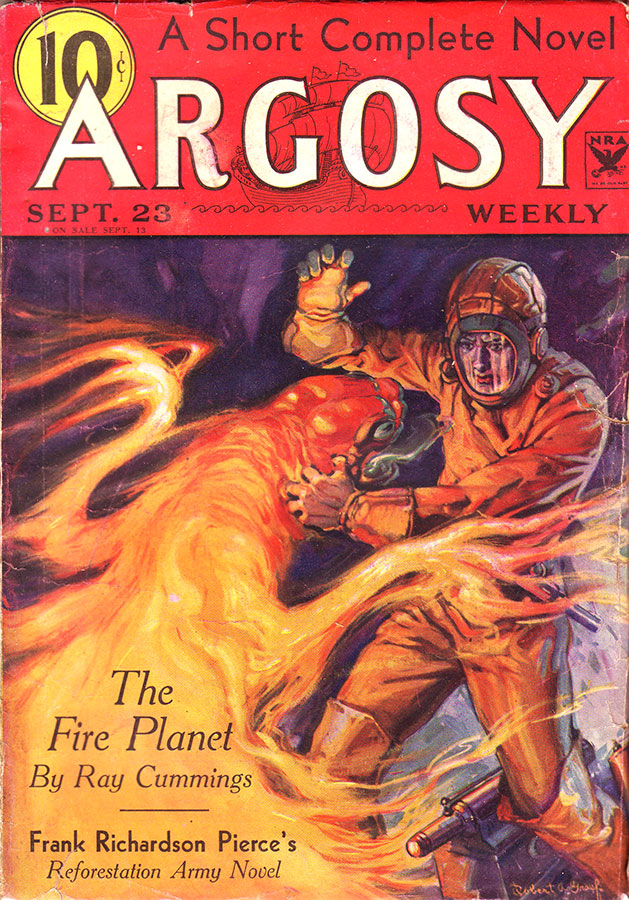
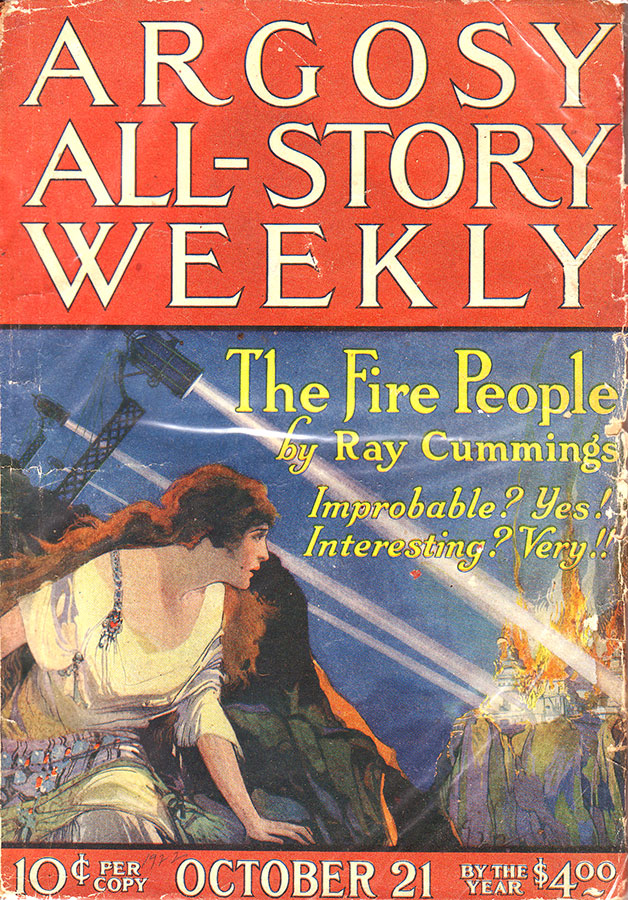
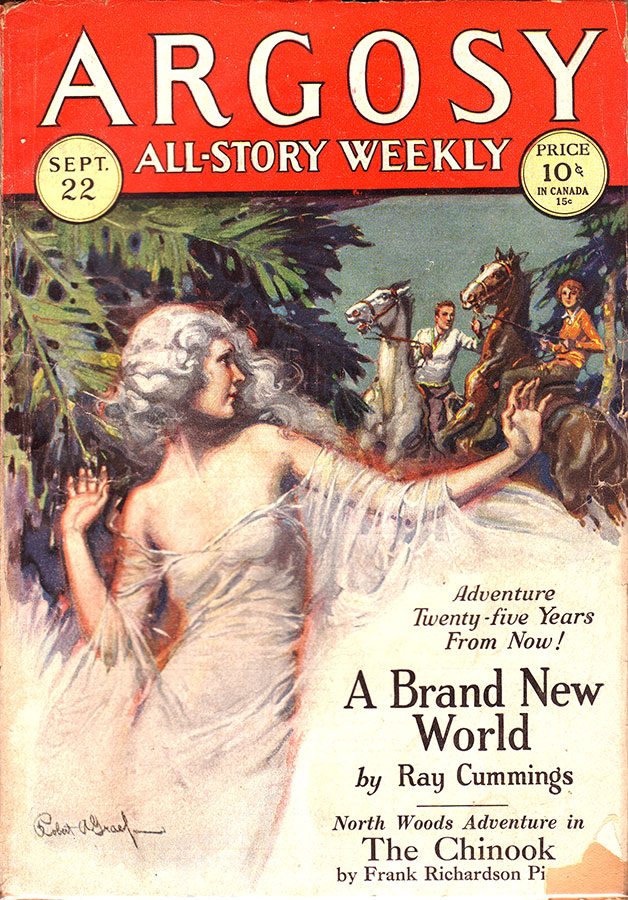
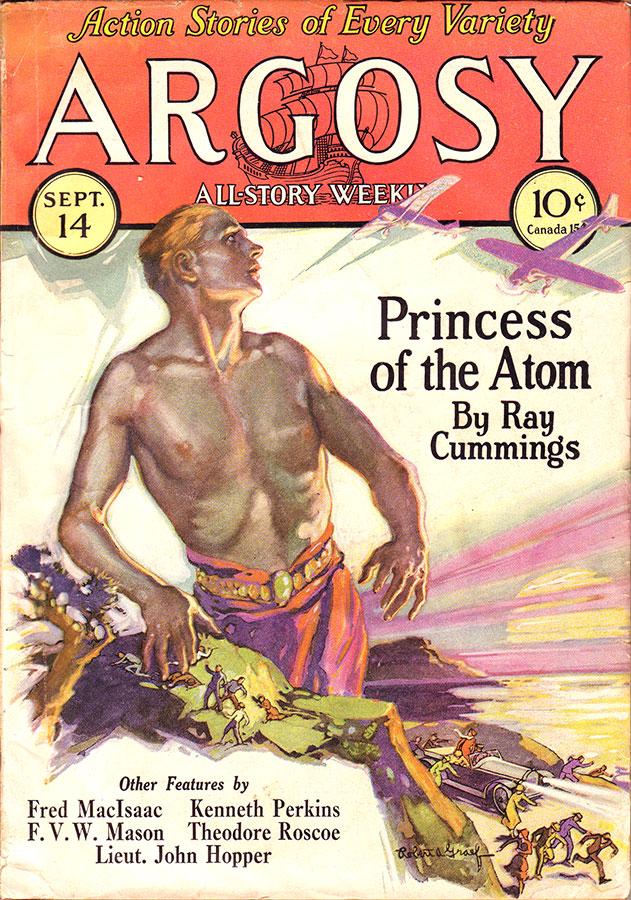
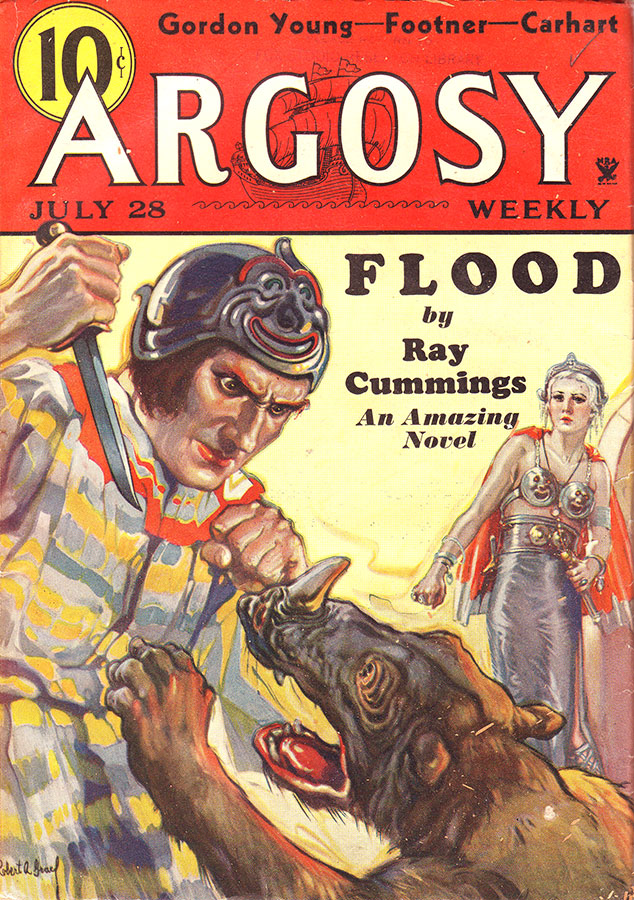
Ralph Milne Farley wrote several stories exploring imaginary worlds conjured up by a new invention called Radio.
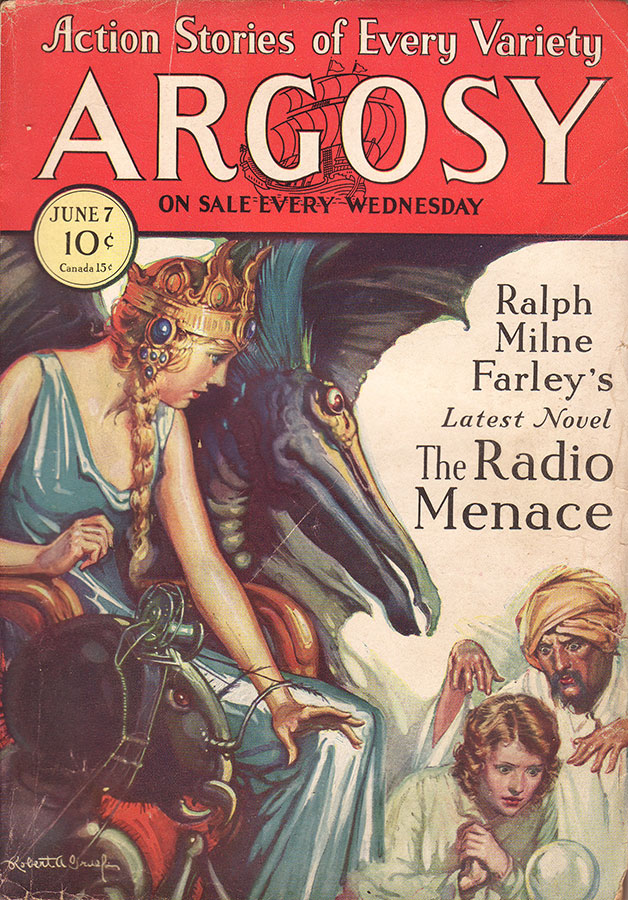
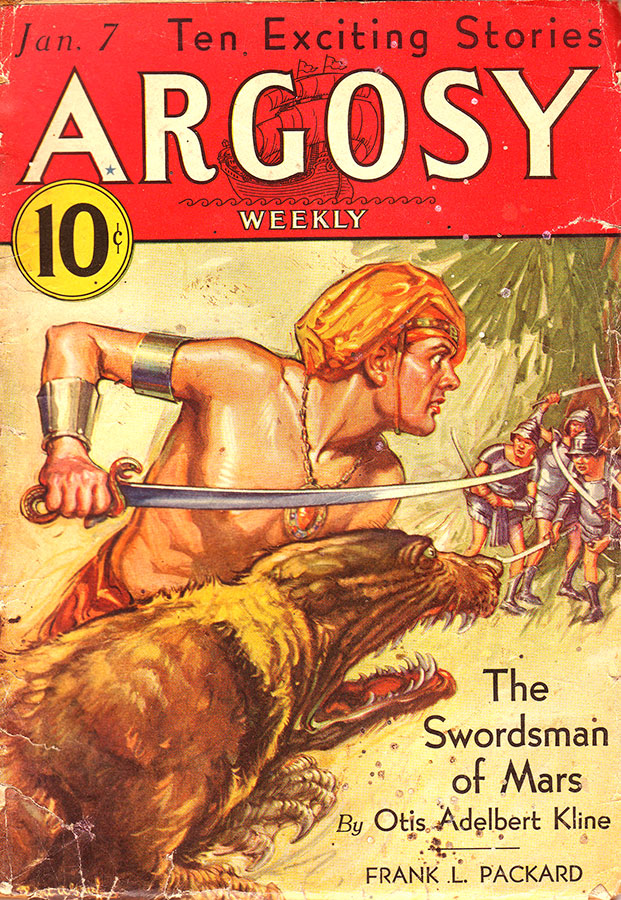
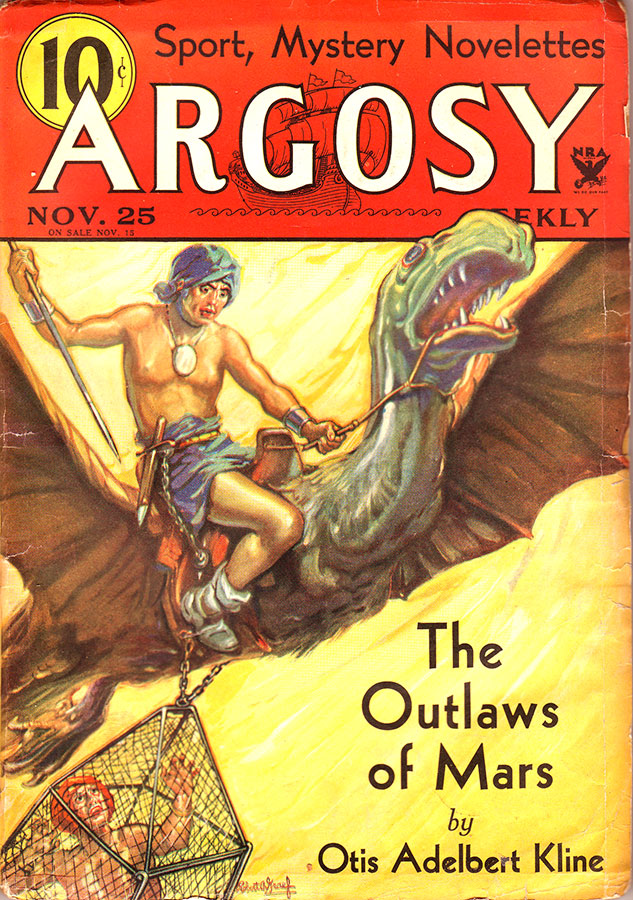
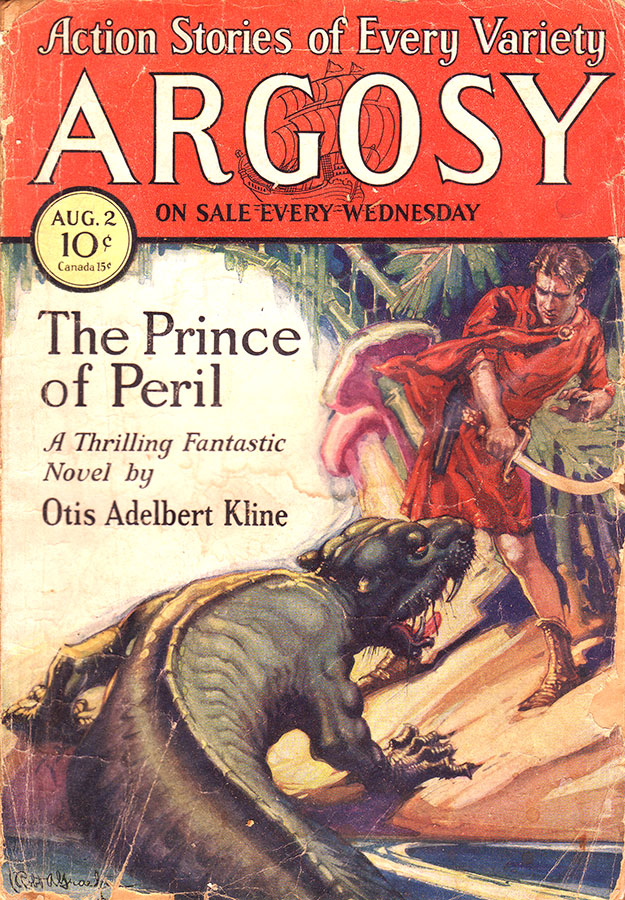
While Argosy ran stories about adventurs on Mars by both, when Kline tried to continue the Prince of Peril's adventures on Venus, he was declined by Argosy because they had started running a Burroughs series of novels based there. So Kline took his Venusian tales to Weird Tales, where one issue with a cover featuring his work also debuted a new character by the name of Conan the Barbarian.
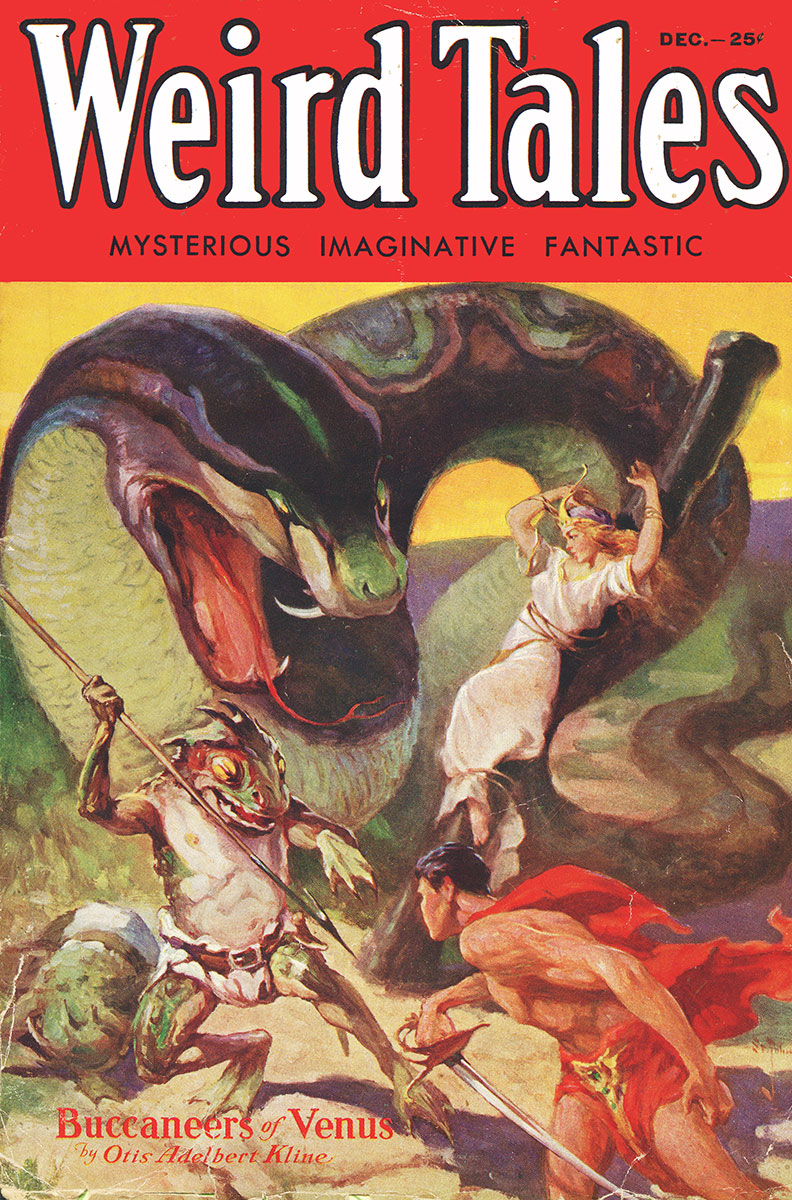
While Argosy was evolving its masthead back to the original title of Argosy, they began slowly phasing out their emphasis on pseudo-science stories. A new competitor had arrived on the crowded newstands, and Amazing Stories editor Hugo Gernsback began to attract many top writers in the field, including Kline and newcomers like H. P. Lovecraft and "Doc" E. E. Smith, whom Munsay editor Bob Davis had rejected as being "too far out." Davis retired soon after realizing his error.
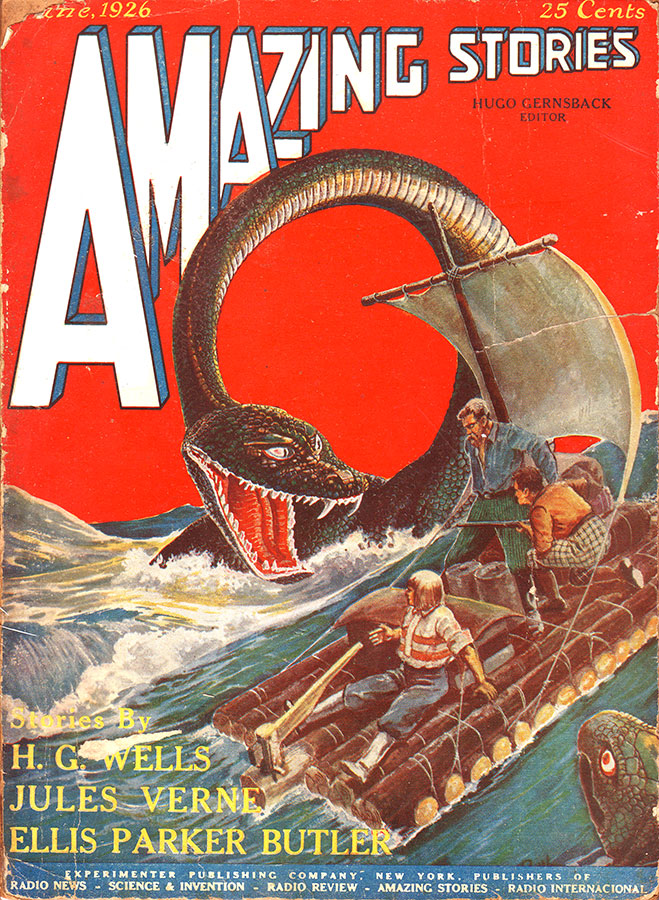
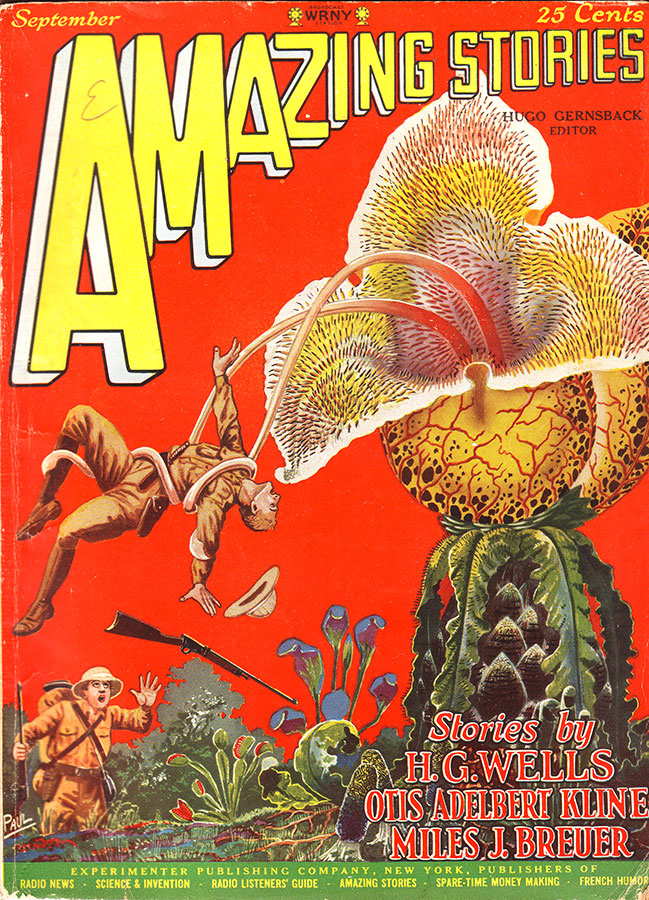
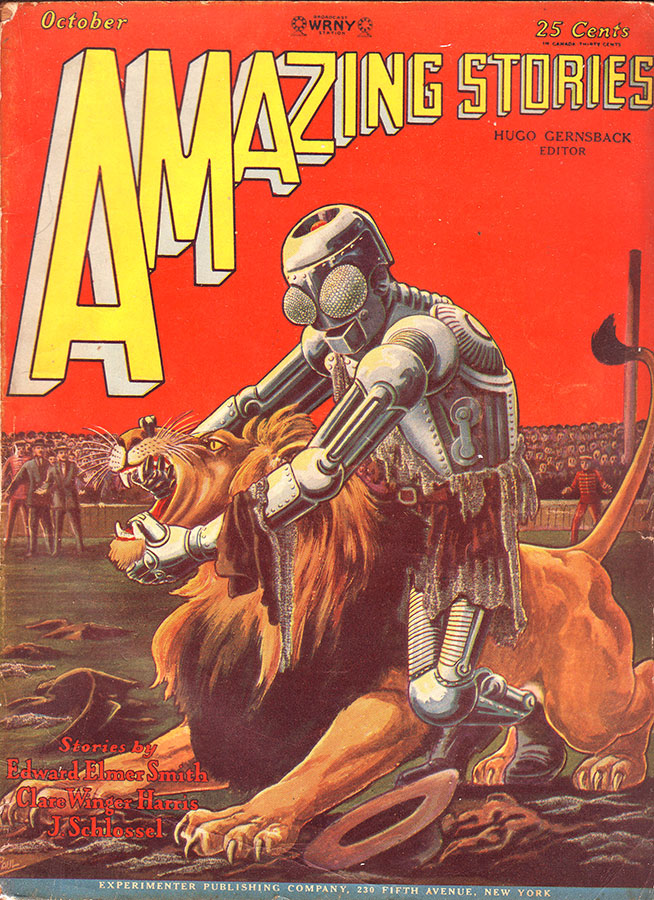
Meanwhile, one ERB creation, Tarzan of the Apes, continued to inspire imitator after imitator.
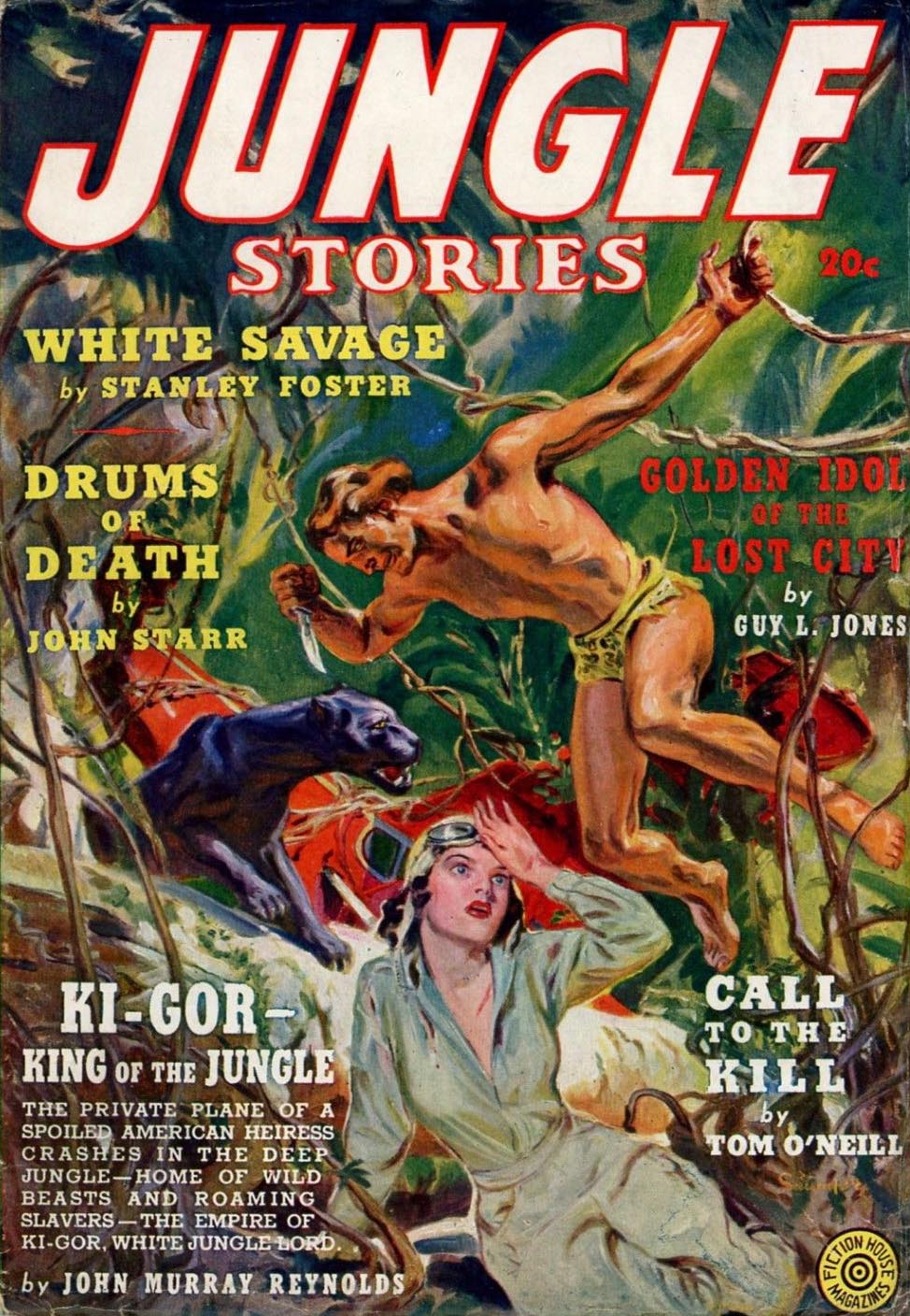
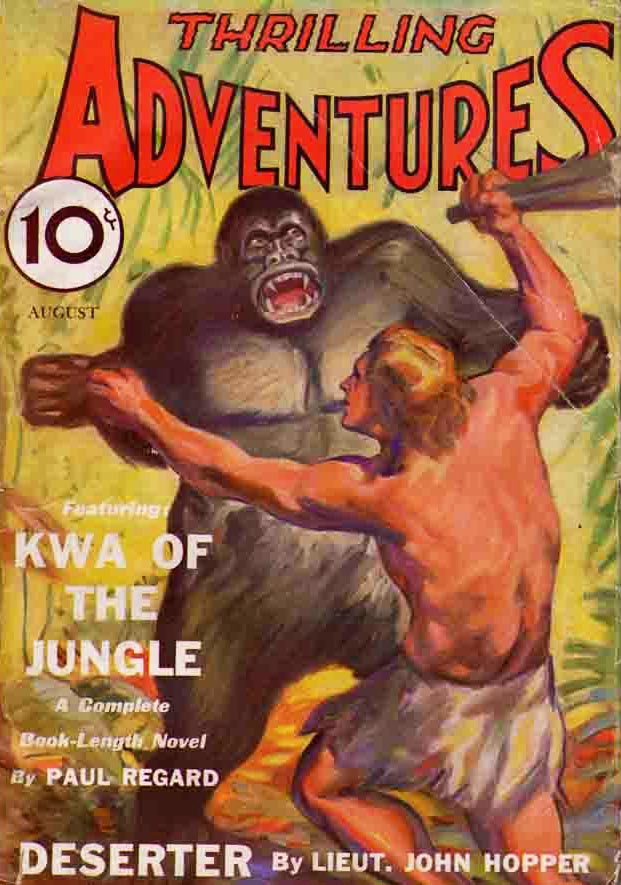
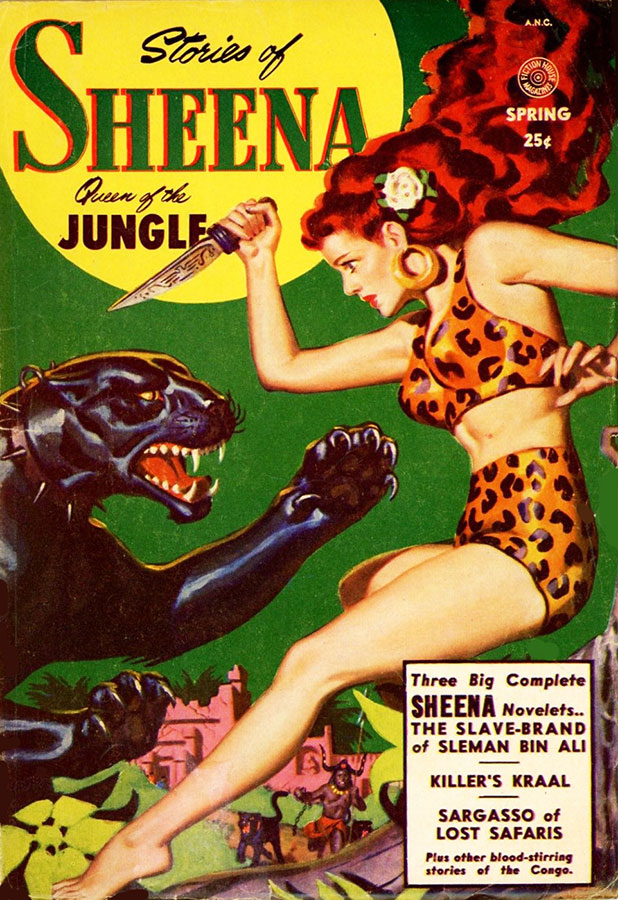
Here's a batch of covers from across the spectrum, including work by J. Allen St. John, a couple more by Monahan (which shows that a hundred years ago the word "Sachem" was used to describe fresh water pearls), and others--including Alex Schomburg's beautiful science fiction comic cover.
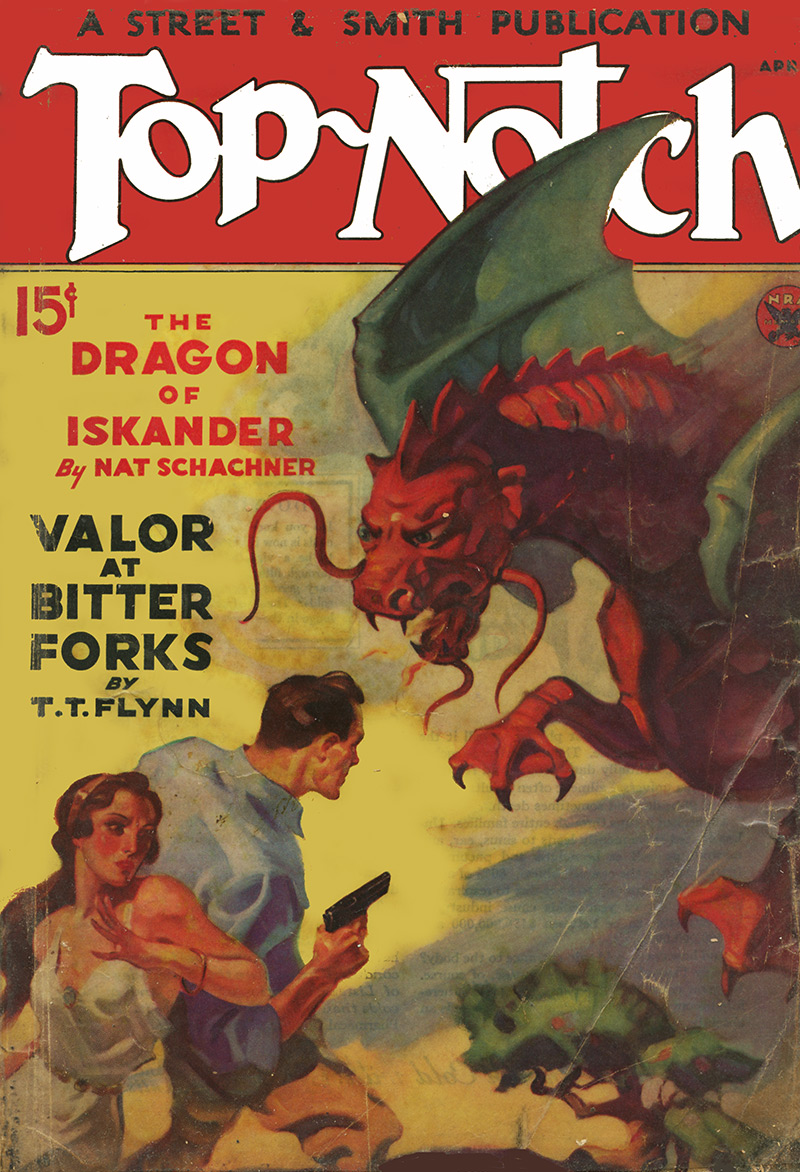
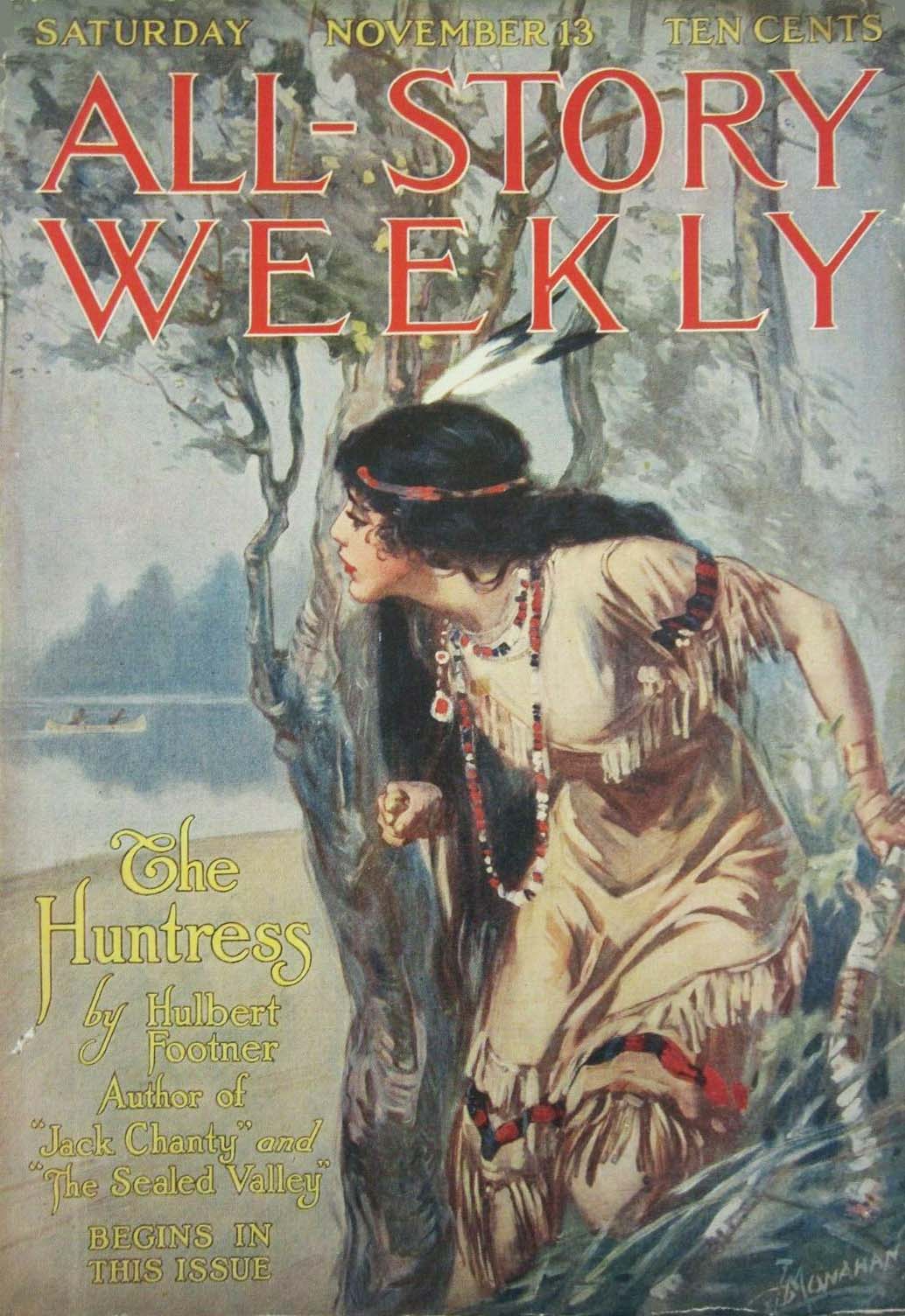
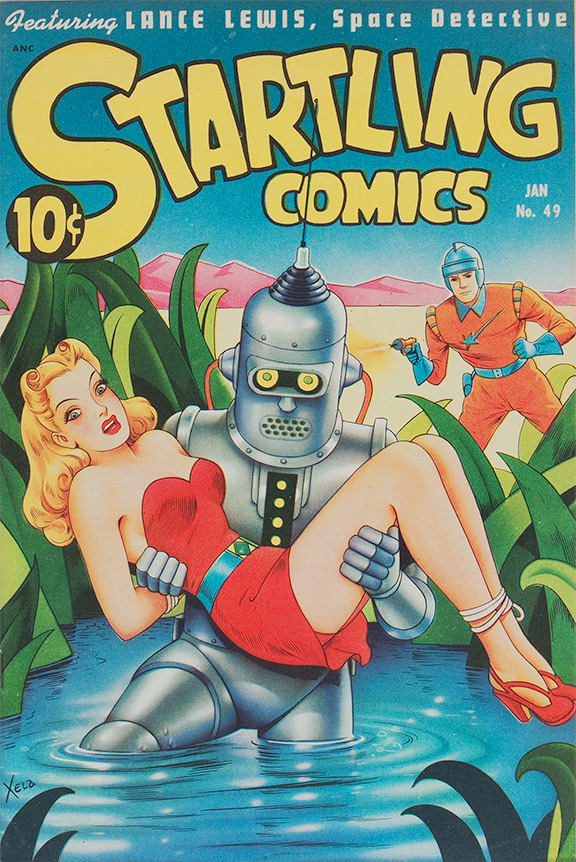
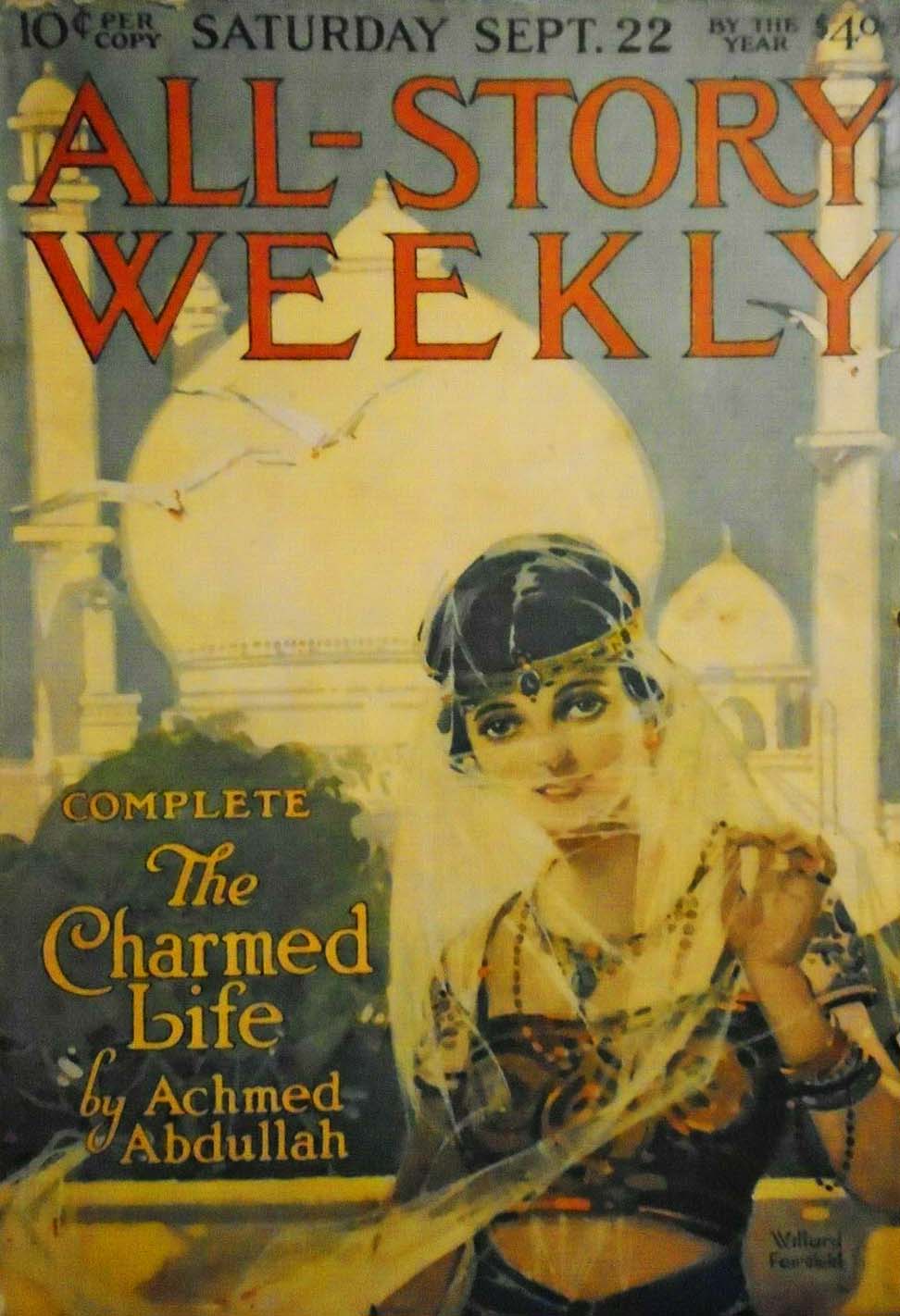

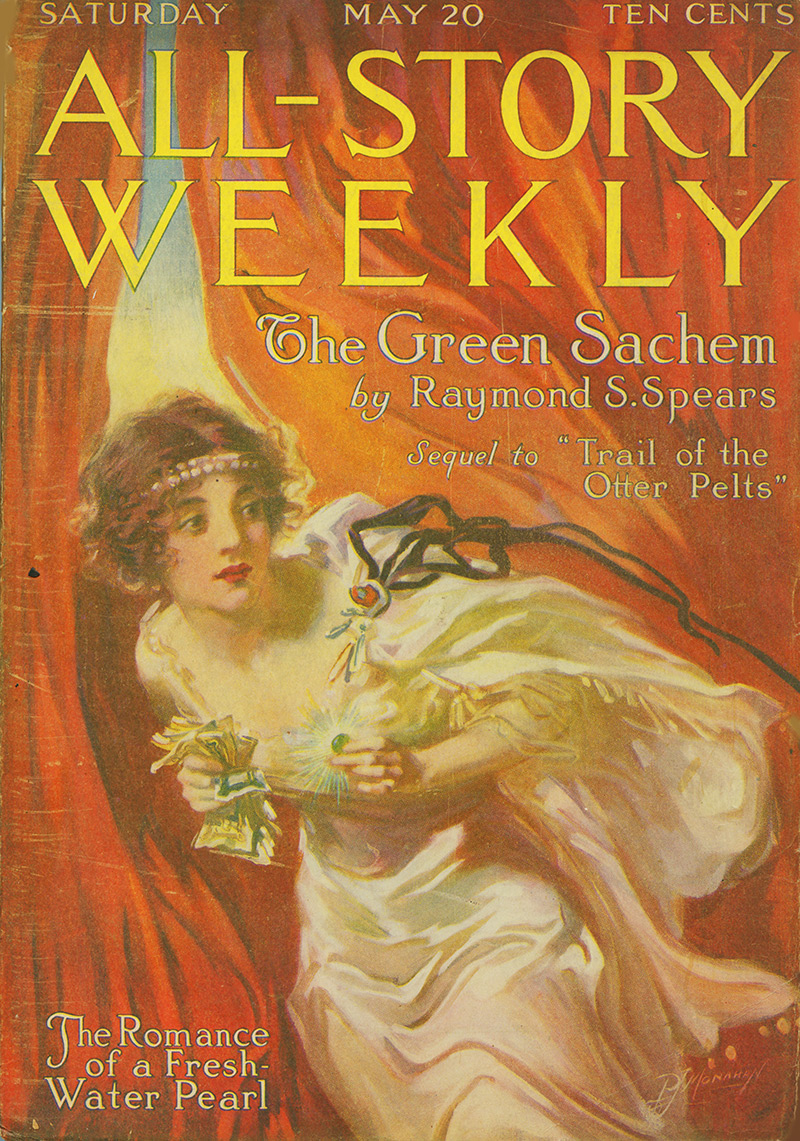
While working on my upcoming Robert E. Howrd Art Chronology,
I came across this first issue of Golden Fleece in my collection.
There is no Howard in it, but lots of other Pulp stalwarts like Talbot Munday
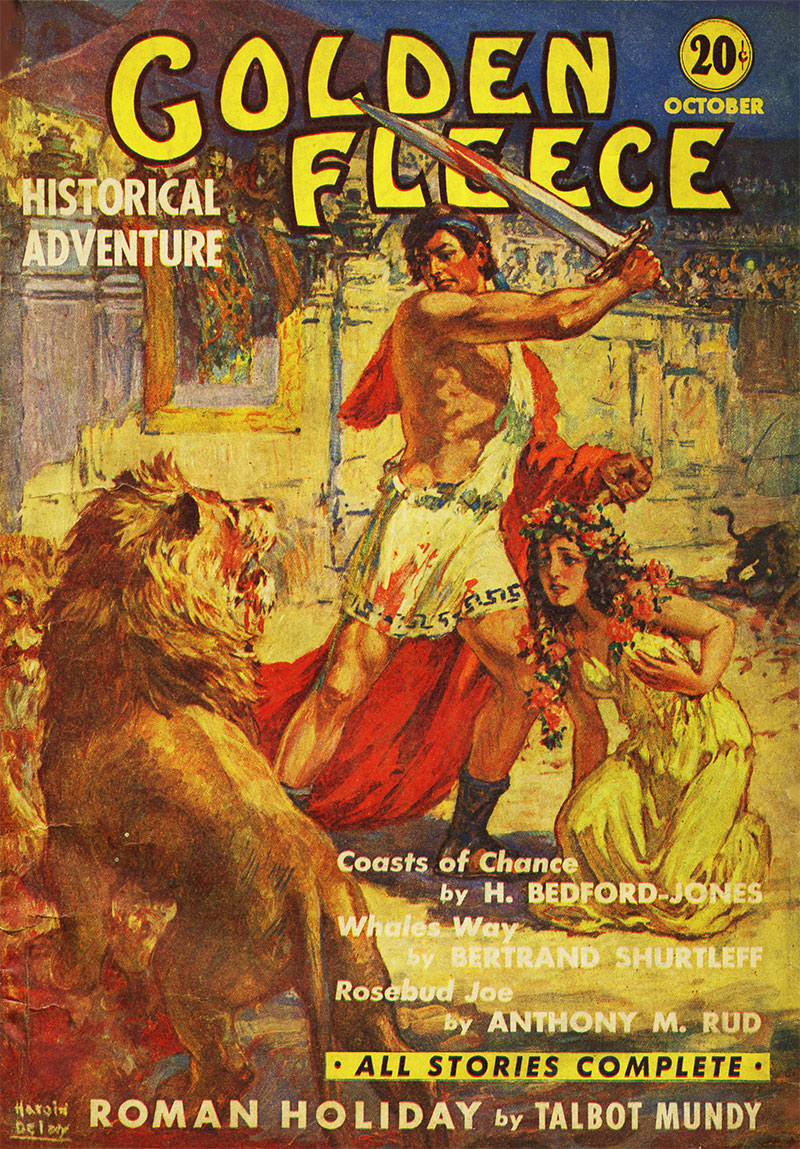
I hope you've enjoyed this spin through the world of old pulps. It barely scratched the surface of what those old magazine have to offer. If you'd like to know more about the man who inspired much of it, click this link to discover the artistic history of Edgar Rice Burroughs.
Here is a sneak peak at the covers for the Robert E. Howard Art Chronology:
If you like high adventure and stories that include travel to exotic locations, then you'll probably enjoy the Wild Stars!
Click here to learn more about the Wild Stars History.
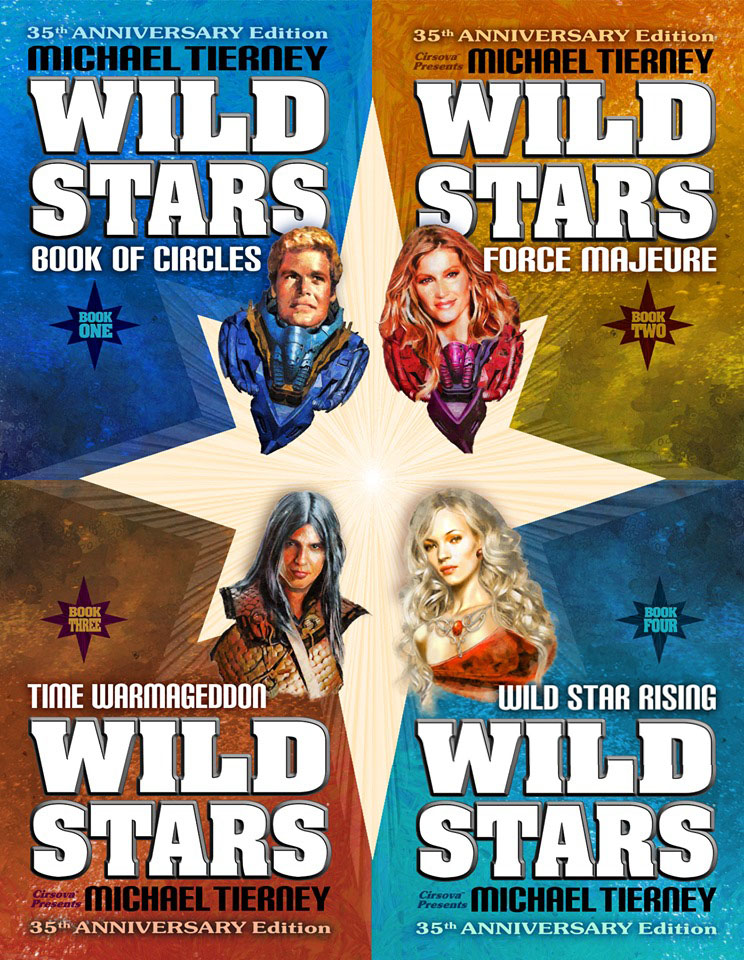
Click here for news on what's new!
 While I was creating the Edgar Rice Burroughs 100 Year Art Chronology, there were a lot of old pulps covers that I didn't use. These were covers that featured ERB's contemporaries and imitators. Some didn't make it into the Chronology because of redundancy, while others were outside the realm of public domain. Even more still are recent discoveries. They are a fun ride into the adventure literature of a century ago.
While I was creating the Edgar Rice Burroughs 100 Year Art Chronology, there were a lot of old pulps covers that I didn't use. These were covers that featured ERB's contemporaries and imitators. Some didn't make it into the Chronology because of redundancy, while others were outside the realm of public domain. Even more still are recent discoveries. They are a fun ride into the adventure literature of a century ago. The second decade of the Twentieth Century was an evolutionary time in American literature, when the Munsey family of publications was under the direction of Editor Bob Davis, and with All-Story he explored every sort of fiction, including pioneering stories that he called Pseudo-Science. Amazing Stories would later redefine the genre as Scientifiction. Today we refer to fantastic fiction as science fiction.
The second decade of the Twentieth Century was an evolutionary time in American literature, when the Munsey family of publications was under the direction of Editor Bob Davis, and with All-Story he explored every sort of fiction, including pioneering stories that he called Pseudo-Science. Amazing Stories would later redefine the genre as Scientifiction. Today we refer to fantastic fiction as science fiction.Some of the writers and their creations that Davis cultivated are still celebrated today, like Edgar Rice Burroughs and Tarzan of the Apes.
Showing the lost science fiction classic Cosmic Courtship (above) on this page led to a restoration project.

Others, like J. U. Geisy and Junius B. Smith's Semi-Dual, a detective who finds both mundane and mystical solutions to every mystery he faces, was more of a cross between Sherlock Holmes and DC Comics Hellblazer. Even more popular than Tarzan at the time, Semi-Dual had 30 books published in less than a score of years, but he is largely forgotten today. Quality copies of the issue featuring the Semi-Dual adventure of the Black Butterfly are rarely offered and always draw fierce competition.
Curse of Quetzal (below) is another fantastical collaboration of Giesy and Smith.
Looking through old pulps covers will reveal not only the fantasies of a generation long gone by, but also their reality of a world at war.



Geisy and Smith also did a John Carter of Mars swipe. Palos of the Dog Star Pack is a tale of astral transference from an earthbound body into that of another person on a far planet, orbiting beneath the star Palos. Since is was not a direct and complete transference of an individual, there was that difference, among others. Palos of the Dog Star Pack is the best known of all Geisy's many works and collaborations. The full five-part set of All-Storys containing this serialization are shown here.





A Man Named Jones is by Charles Stilson, whose Polaris of the Snows--a Tarzan imitator that was fatally flawed because it placed polar bears in the Antarctic--is his better remembered work. But, A Man Named Jones was Stilson's signature work, and I've never seen another copy of this issue offered for sale, except as a facsimile reprint. The only way I found my copy was within a bound collection of All-Story issues.


Fang Tung Magician was written by the incredibly prolific H. Bedford-Jones, whose historical adventures were featured in more issues than any other All-Story author.



A Daughter of Borneo is another exotic locale adventure, like A Man Named Jones. What's notable about the covers for both is artist P. J. Monahan, who at the time was the main cover illustrator for Edgar Rice Burroughs's many different genres of tales. Monahan illustrated everything from the fantastic to the mundane, and did it all well, as his cover for Mr. North of Nowhere shows.



Gunhilda's Magic is simply another picture of a pretty girl, with glamor girl covers being a very common theme on the covers of other pulps from this time. What makes this one unique is the added fantasy element. This was what separated All-Story from its competitors, who also often featured exceptional cover art, in an age when print runs ran in the millions.


All-Story would eventury be incorporated into Munsey's flagship title, Argosy Magazine, and their run of fantastic covers and literature would continue throughout a series of title changes--first to Argosy All-Story Weekly, then Argosy Weekly, and finally back to the original title of Argosy..


While I did show P. J. Monahan's cover for the first alternate reality story, The Blind Spot, in the ERB Art Chronology, because it was not yet in public domain, I couldn't show the sequel story of The Spot of Life. The tragic story of why the sequel was written by Austin Hall without the help of Homer Eon Flint is told in the Chronology.



Argosy featured a stable of top notch writers. A. Merrit's Seven Footprints to Satan shows the heroine walking those footsteps. And while even writers like Max Brand were known to do adventure stories beyond westerns, not many realize that Perry Mason creator Erle Stanley Gardner took a crack at science fiction.



Ray Cummings was another ERB imitator who, dispite being very prolific, didn't do direct swipes like Otis Adelbert Kline did with Jan of the Jungle.





Ralph Milne Farley wrote several stories exploring imaginary worlds conjured up by a new invention called Radio.




While Argosy ran stories about adventurs on Mars by both, when Kline tried to continue the Prince of Peril's adventures on Venus, he was declined by Argosy because they had started running a Burroughs series of novels based there. So Kline took his Venusian tales to Weird Tales, where one issue with a cover featuring his work also debuted a new character by the name of Conan the Barbarian.

While Argosy was evolving its masthead back to the original title of Argosy, they began slowly phasing out their emphasis on pseudo-science stories. A new competitor had arrived on the crowded newstands, and Amazing Stories editor Hugo Gernsback began to attract many top writers in the field, including Kline and newcomers like H. P. Lovecraft and "Doc" E. E. Smith, whom Munsay editor Bob Davis had rejected as being "too far out." Davis retired soon after realizing his error.



Meanwhile, one ERB creation, Tarzan of the Apes, continued to inspire imitator after imitator.



Here's a batch of covers from across the spectrum, including work by J. Allen St. John, a couple more by Monahan (which shows that a hundred years ago the word "Sachem" was used to describe fresh water pearls), and others--including Alex Schomburg's beautiful science fiction comic cover.






While working on my upcoming Robert E. Howrd Art Chronology,
I came across this first issue of Golden Fleece in my collection.
There is no Howard in it, but lots of other Pulp stalwarts like Talbot Munday

I hope you've enjoyed this spin through the world of old pulps. It barely scratched the surface of what those old magazine have to offer. If you'd like to know more about the man who inspired much of it, click this link to discover the artistic history of Edgar Rice Burroughs.
Here is a sneak peak at the covers for the Robert E. Howard Art Chronology:
If you like high adventure and stories that include travel to exotic locations, then you'll probably enjoy the Wild Stars!
Click here to learn more about the Wild Stars History.
Click here to learn more about the Wild Stars History.

Click here for news on what's new!

